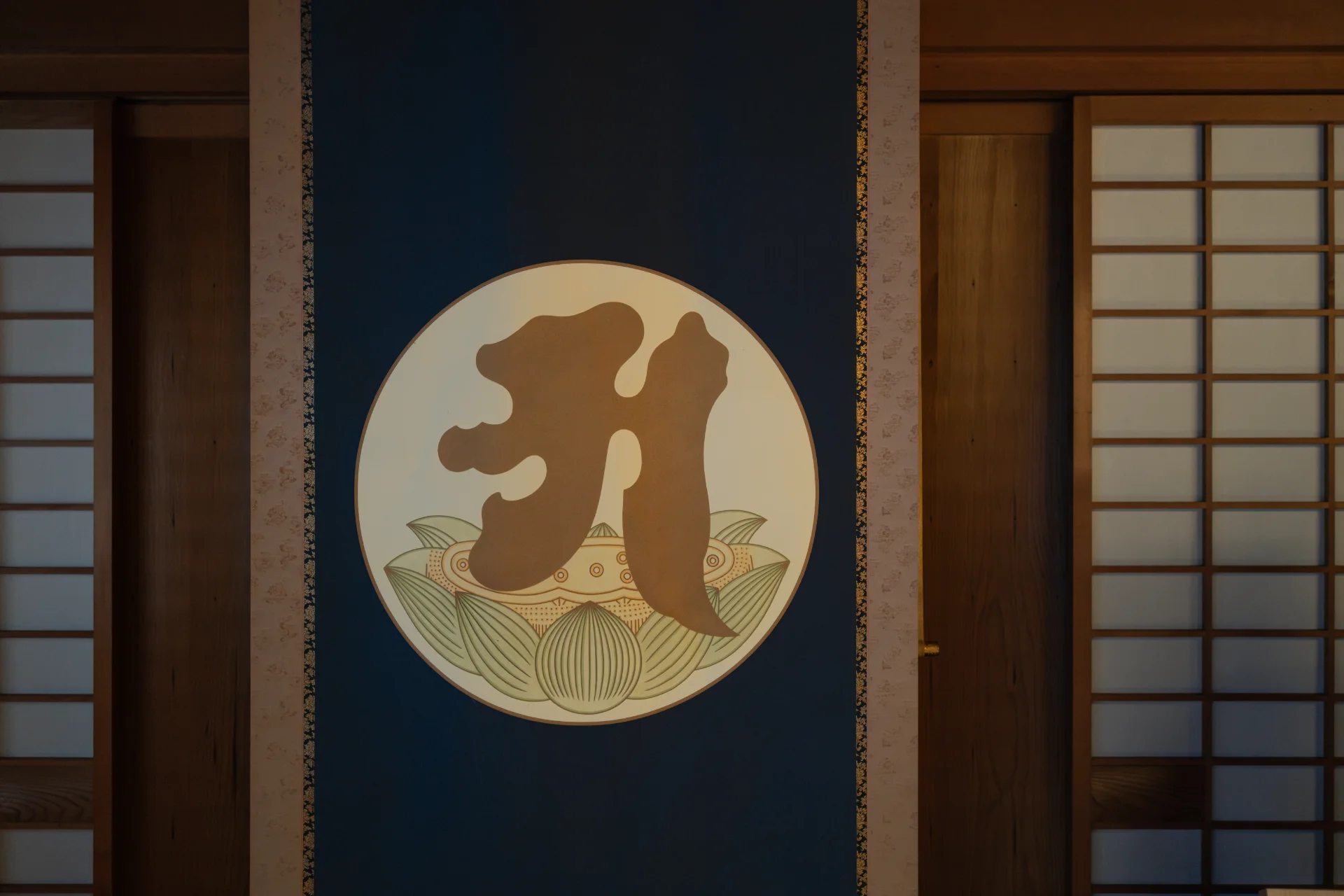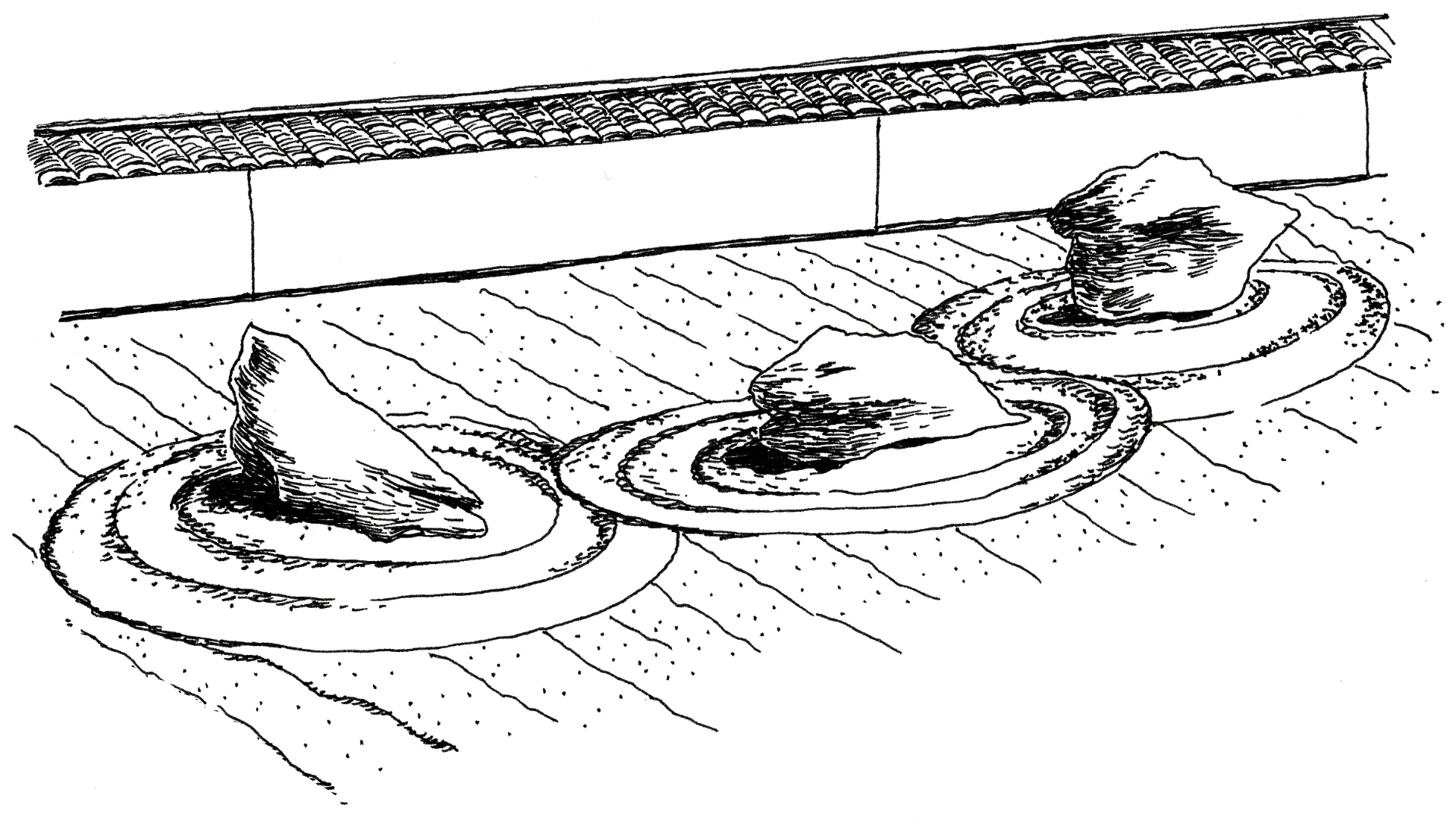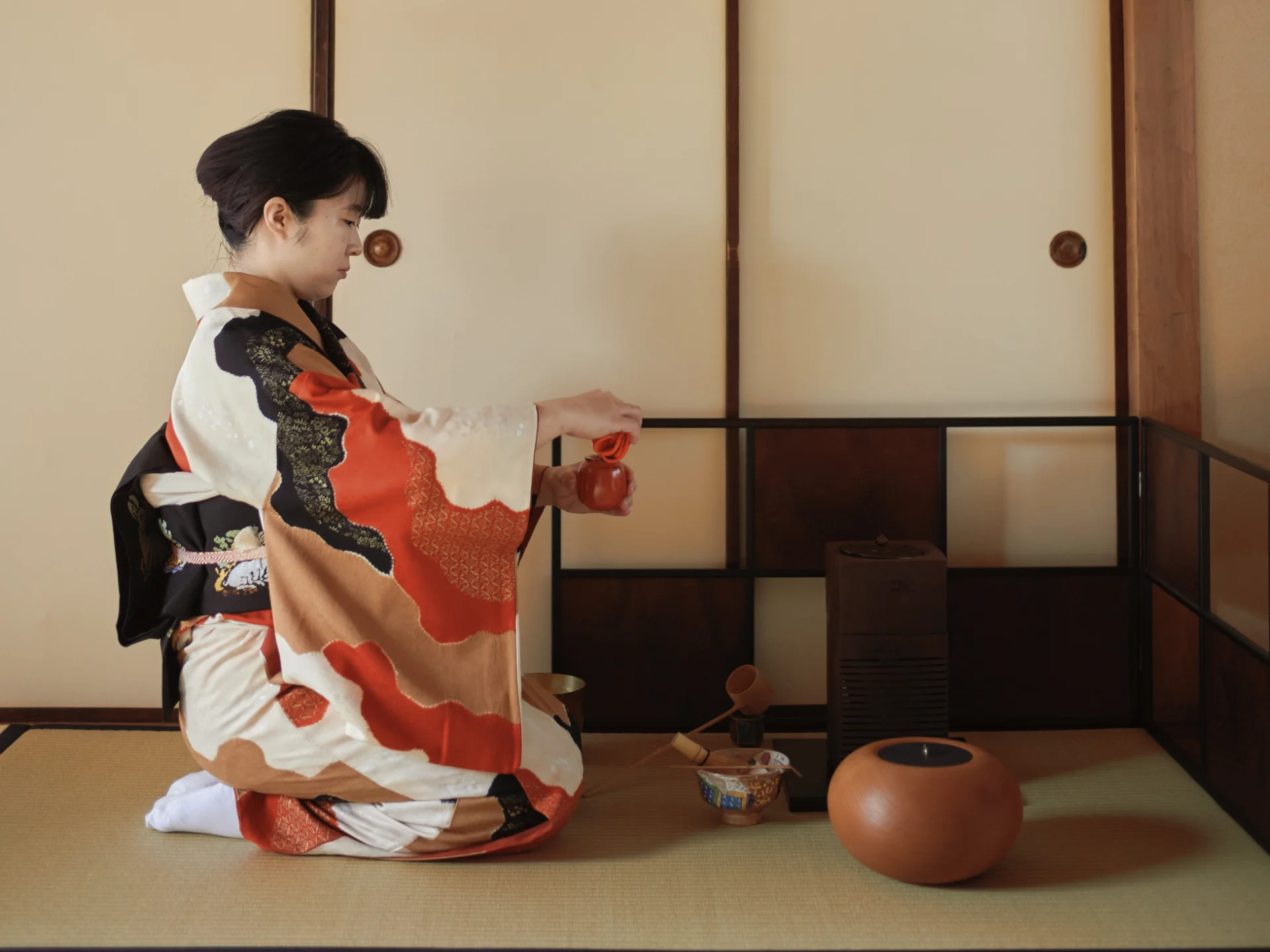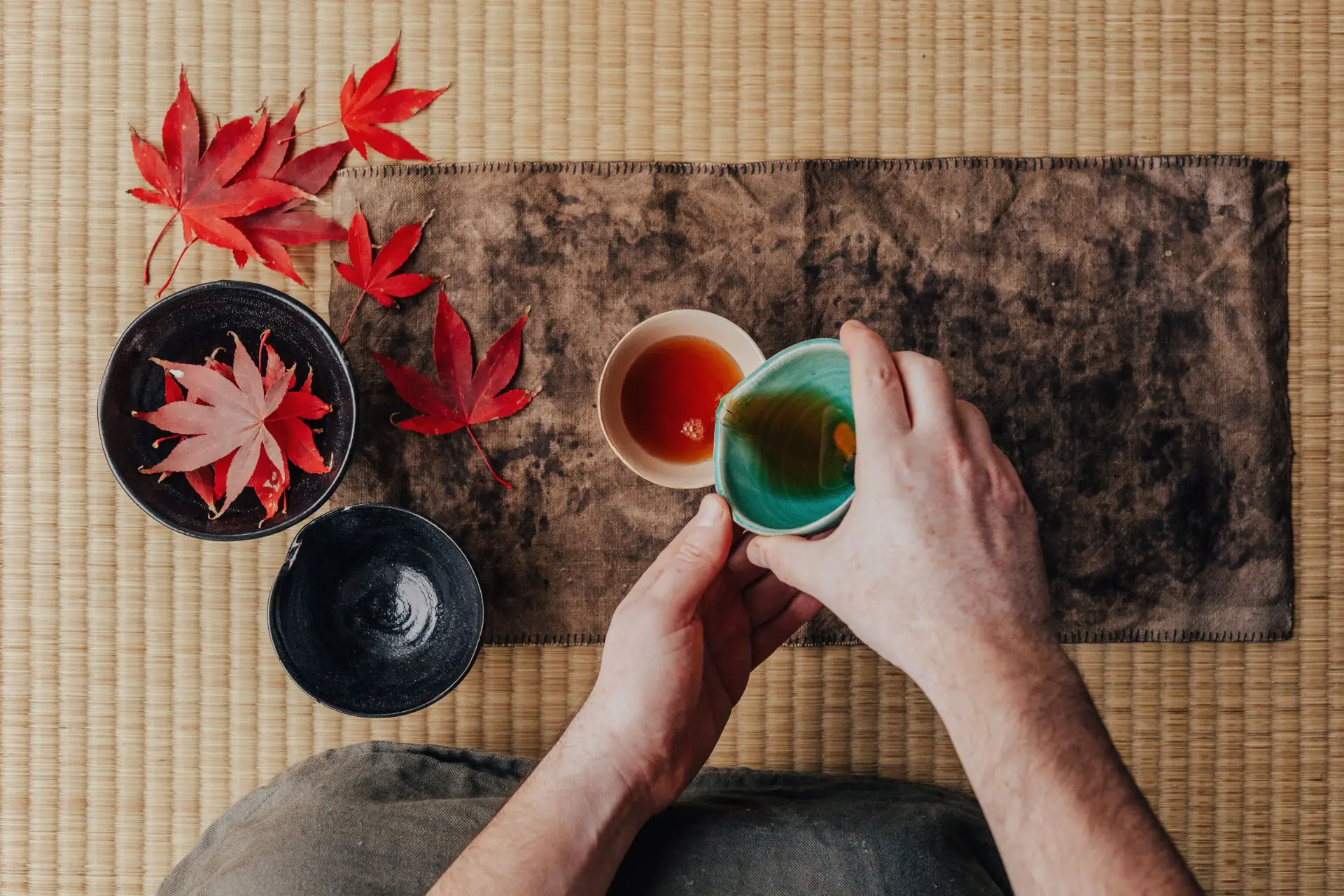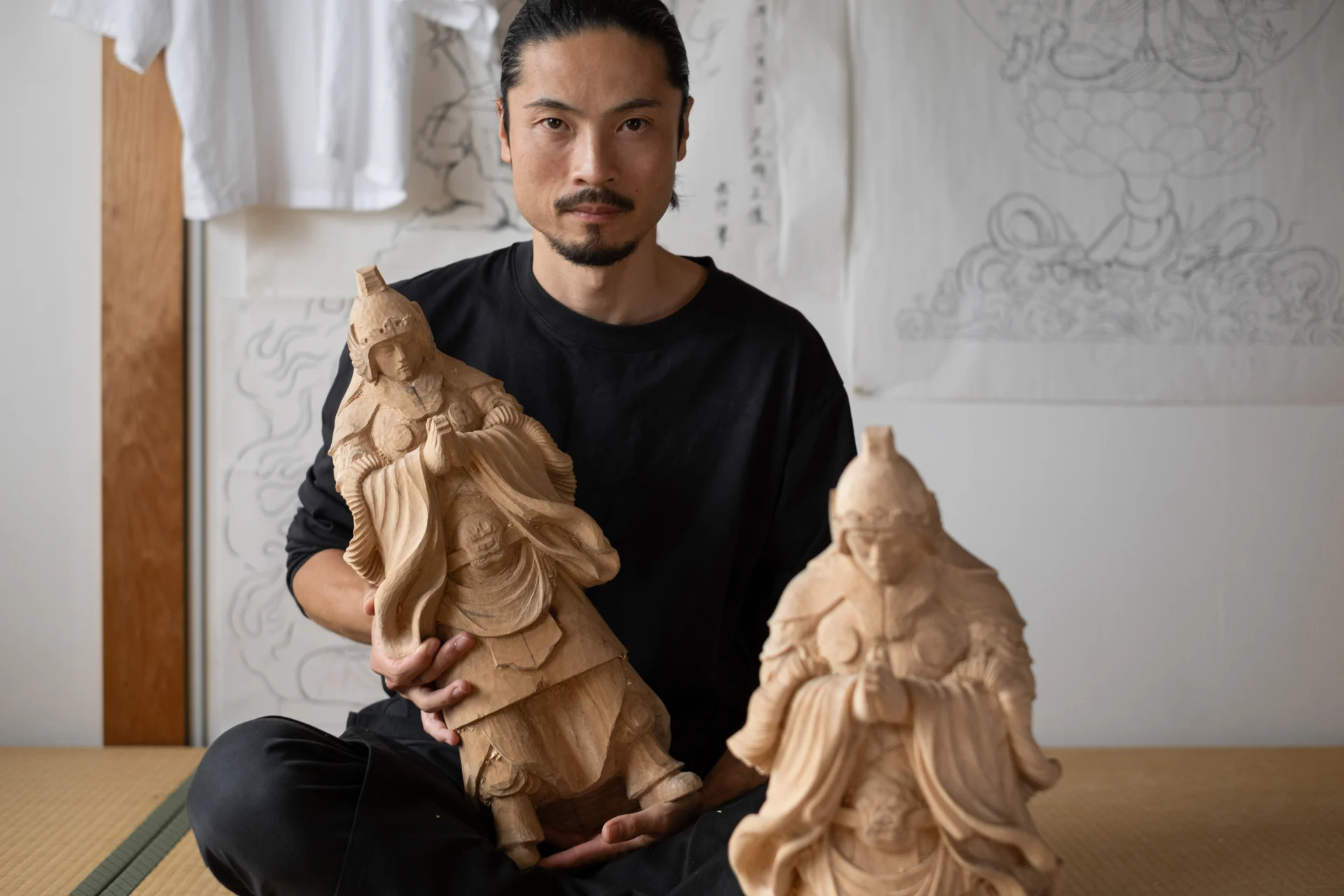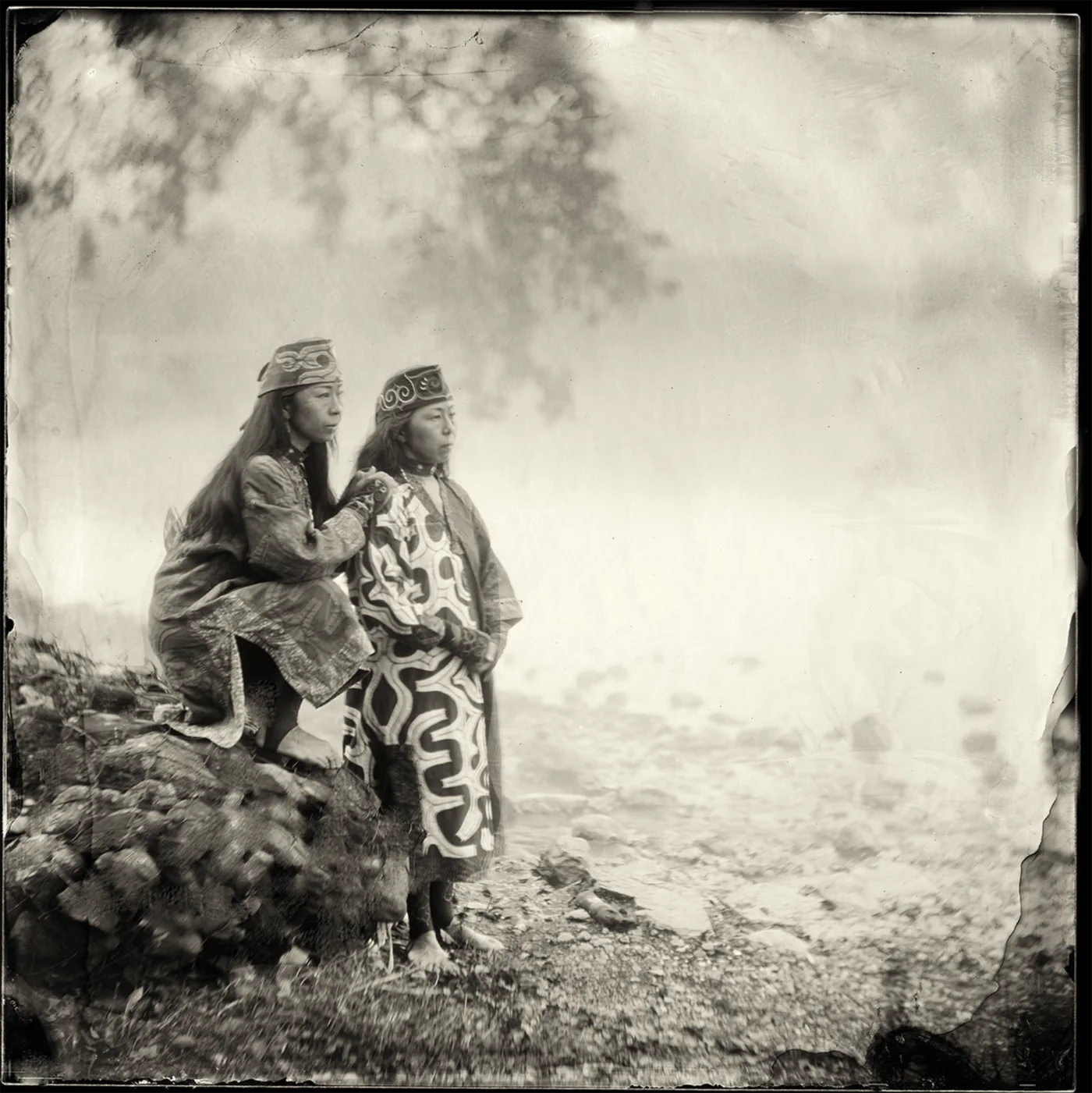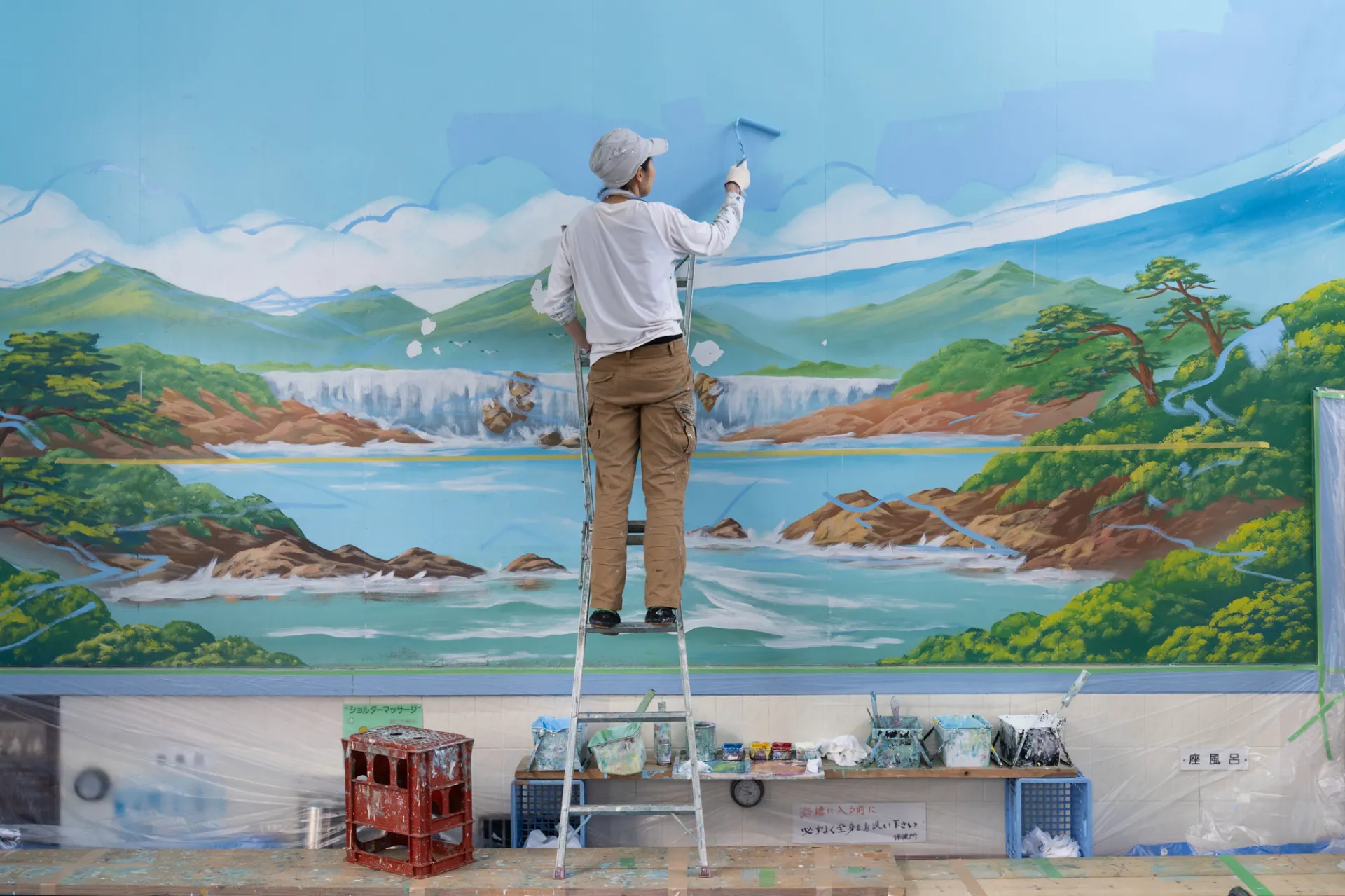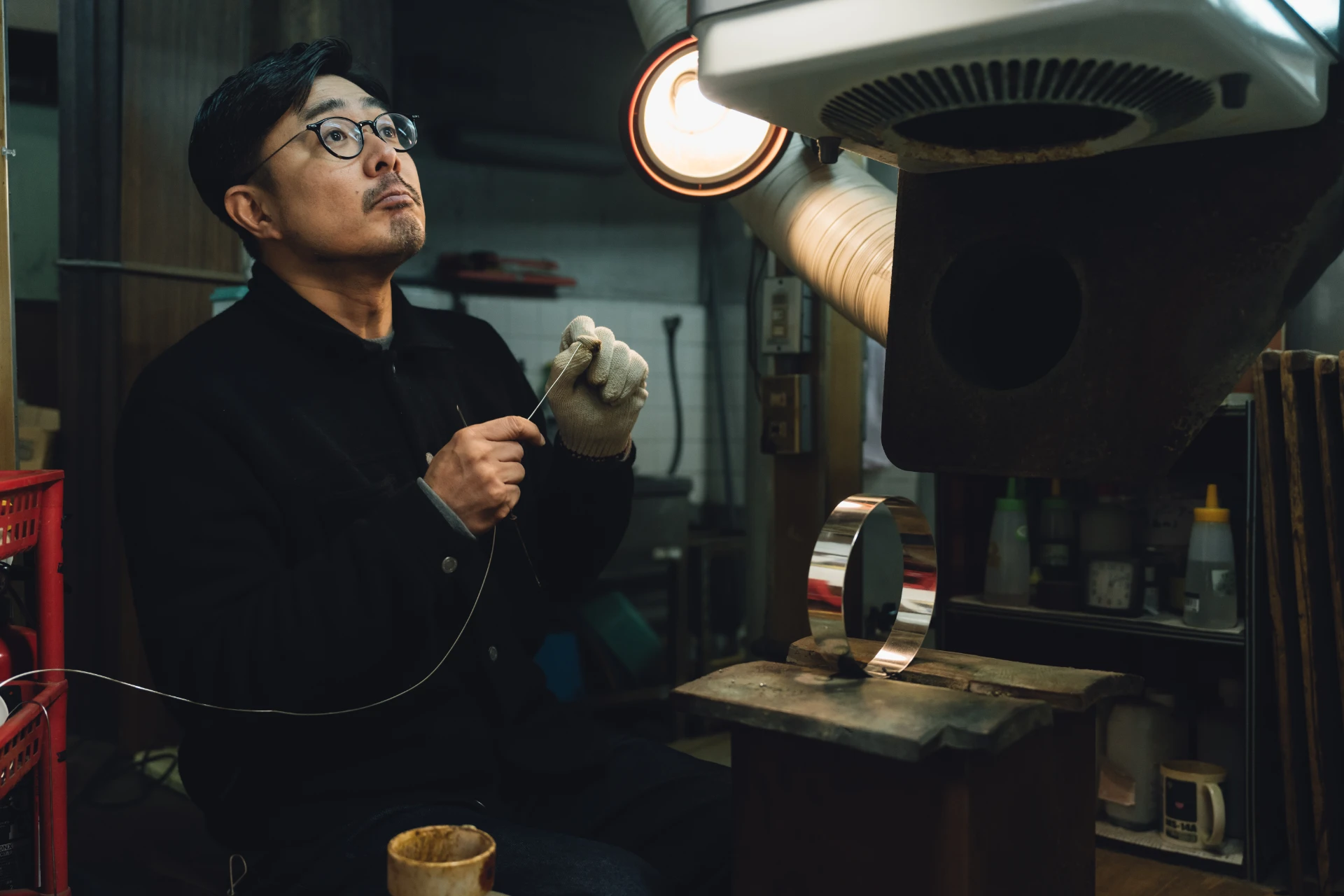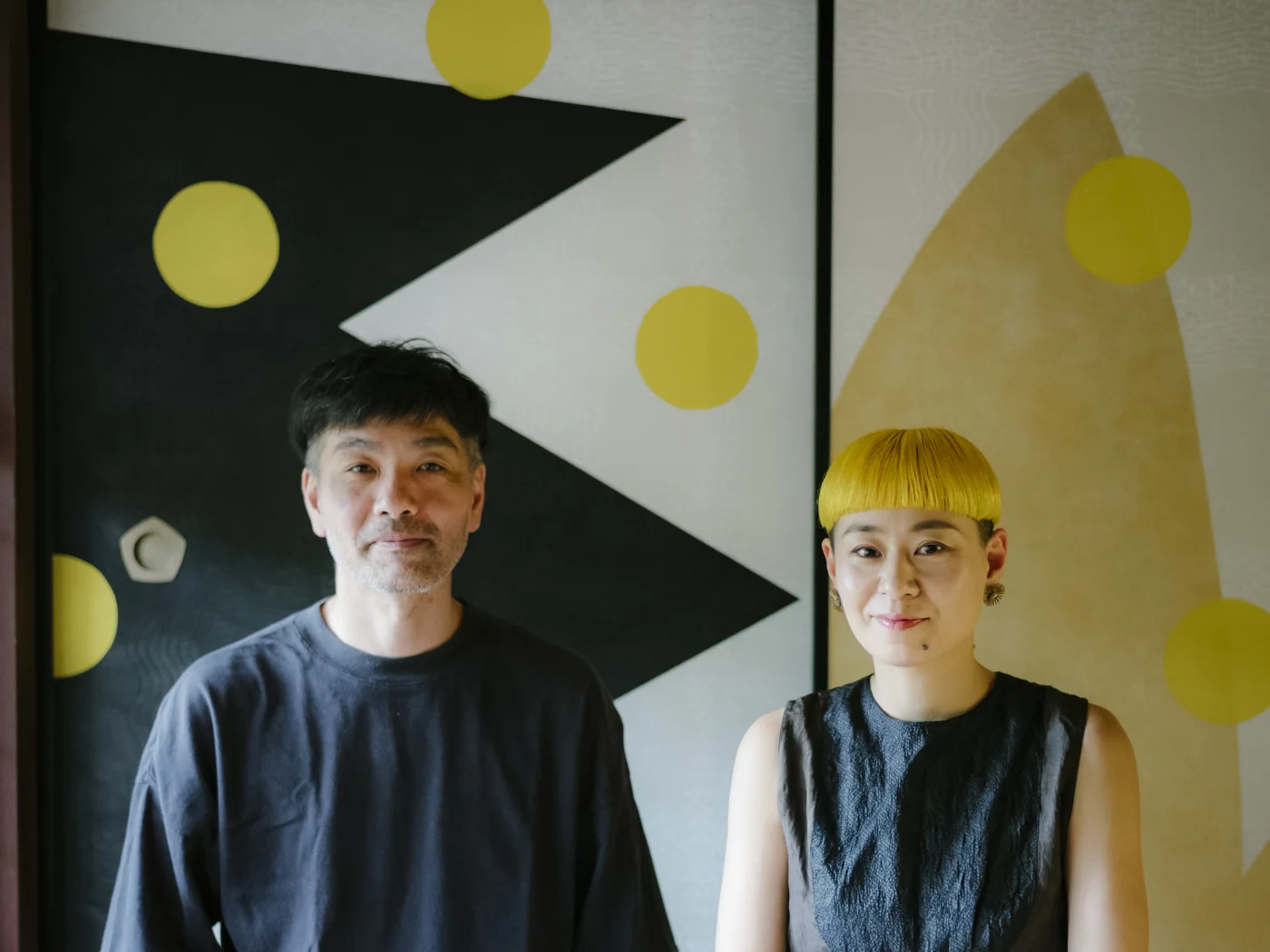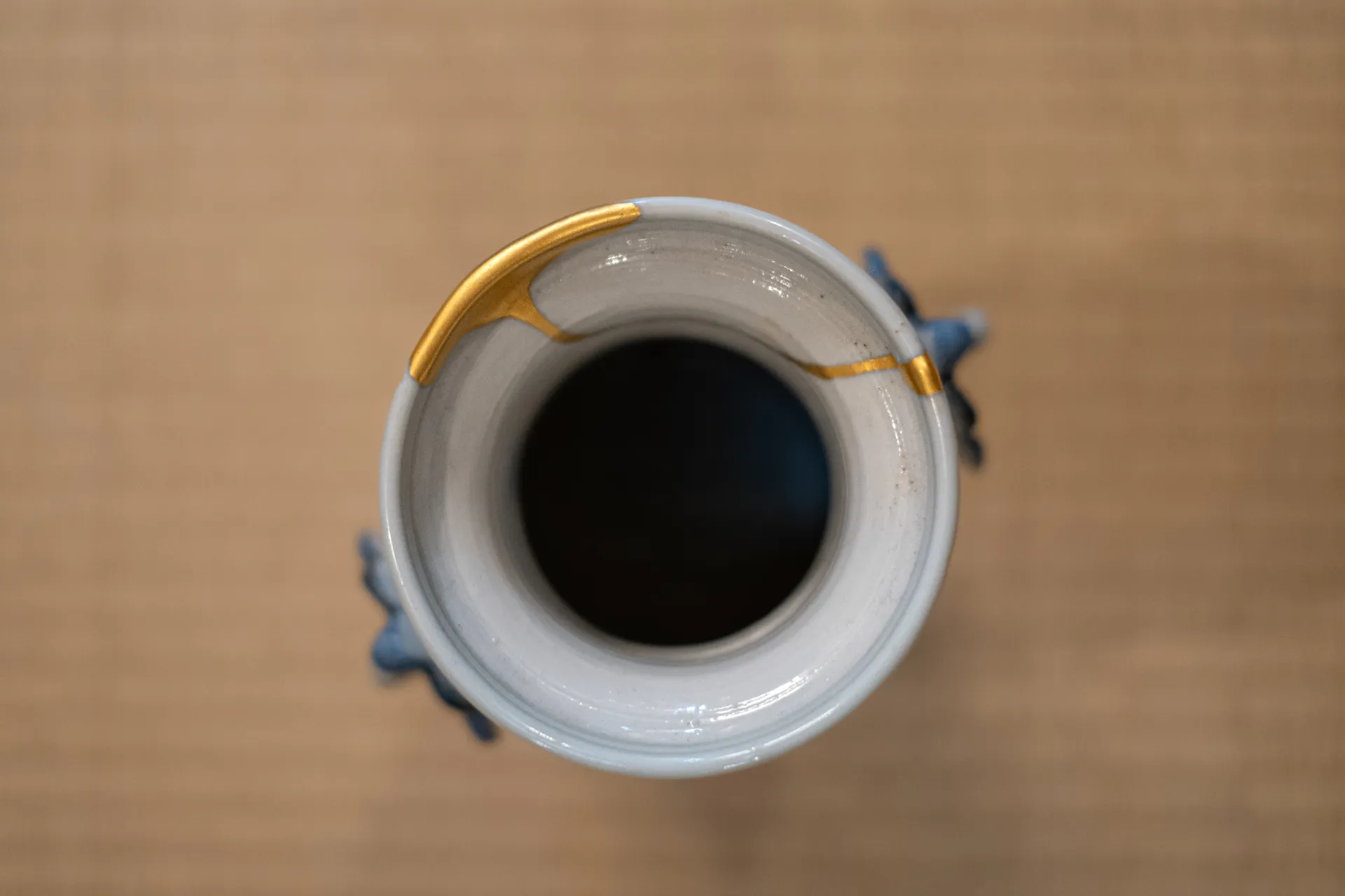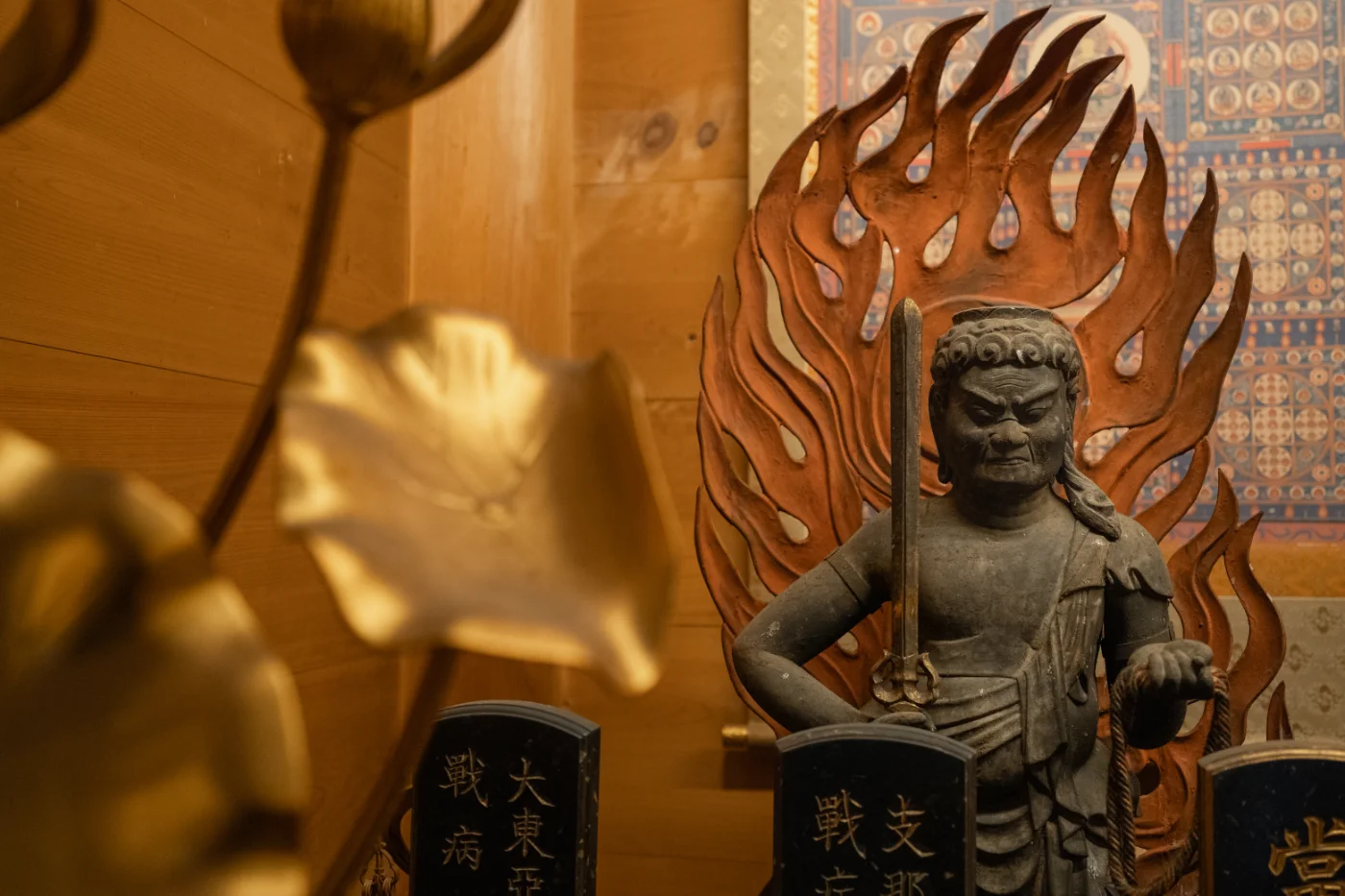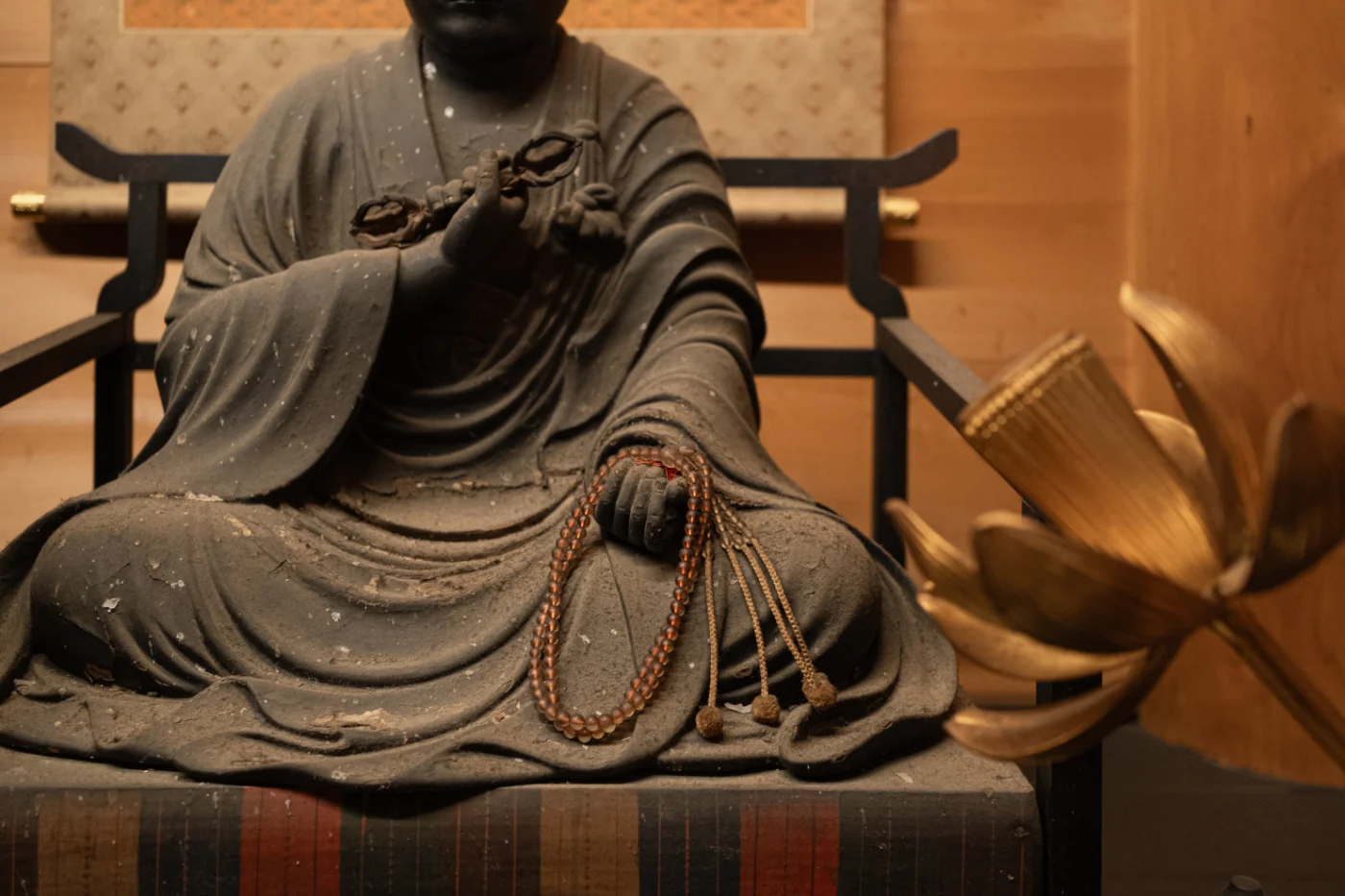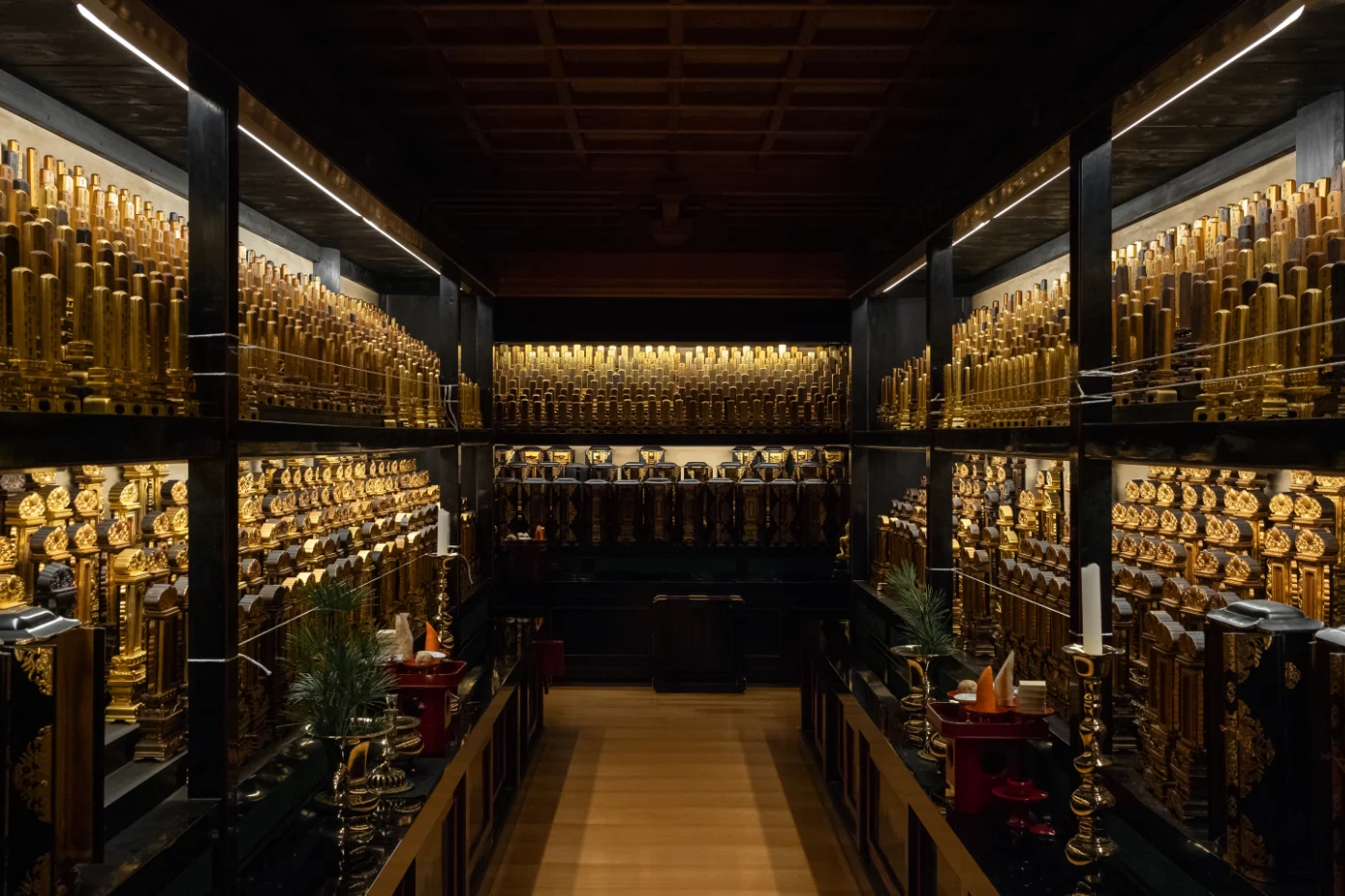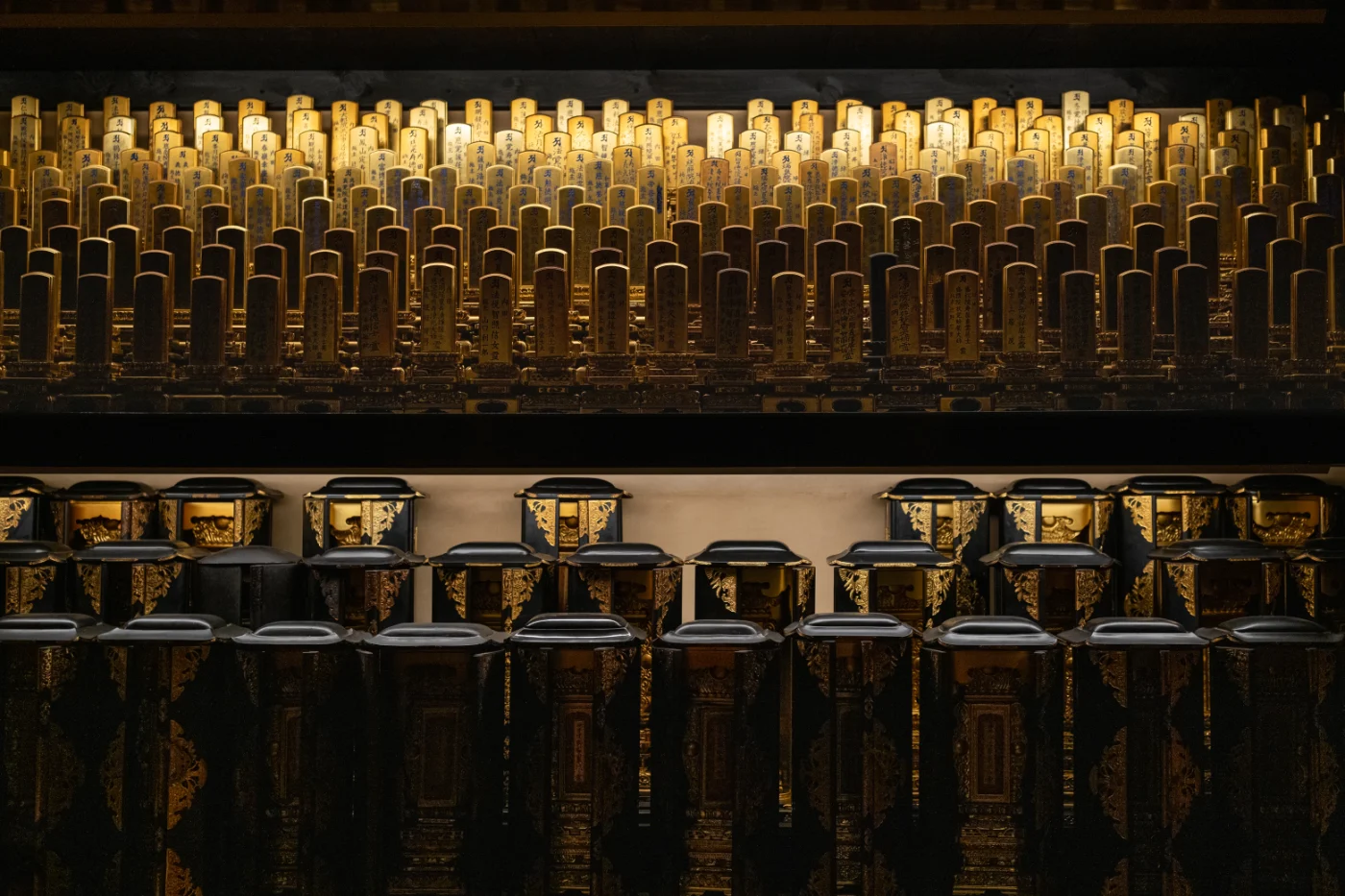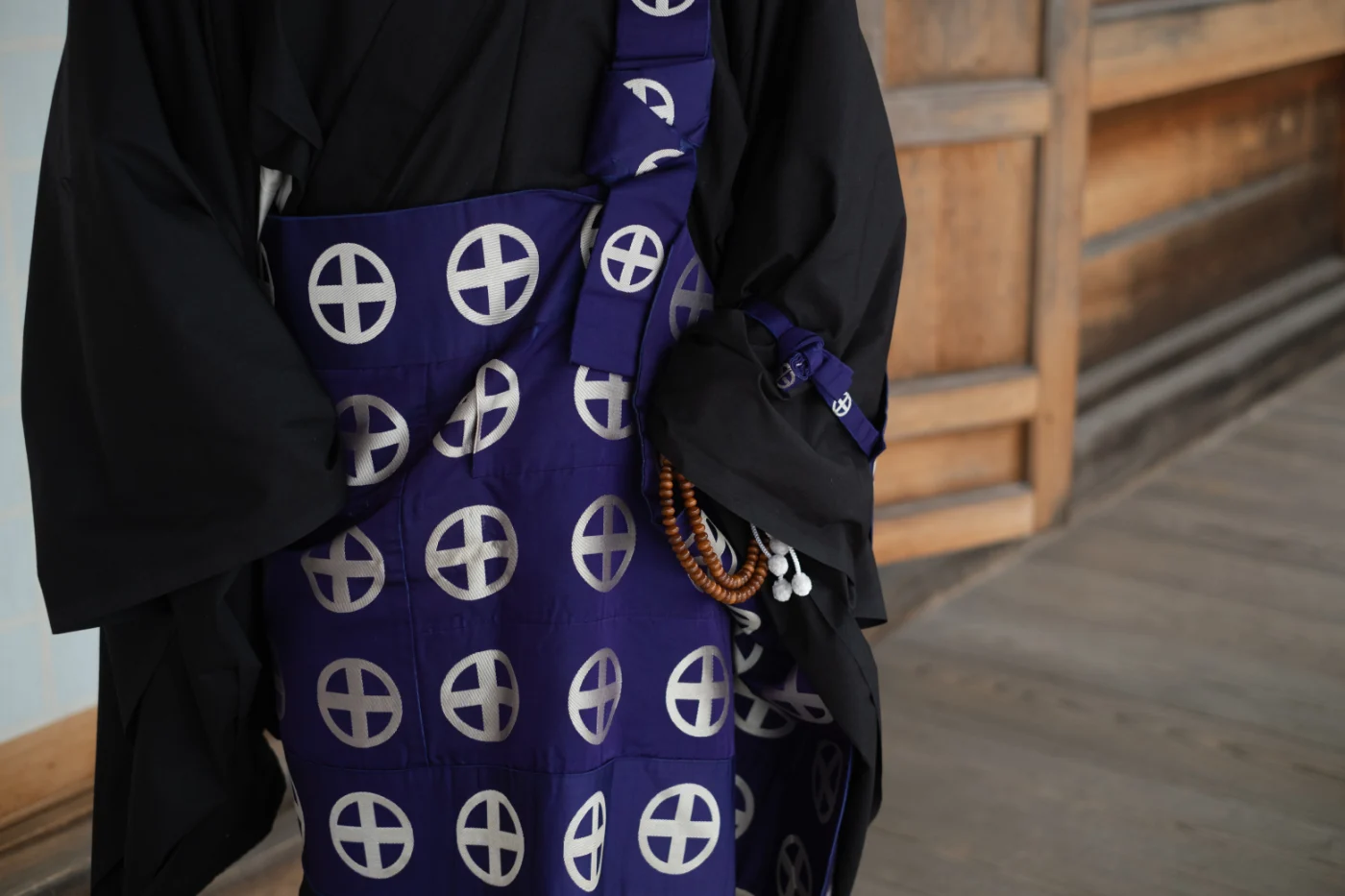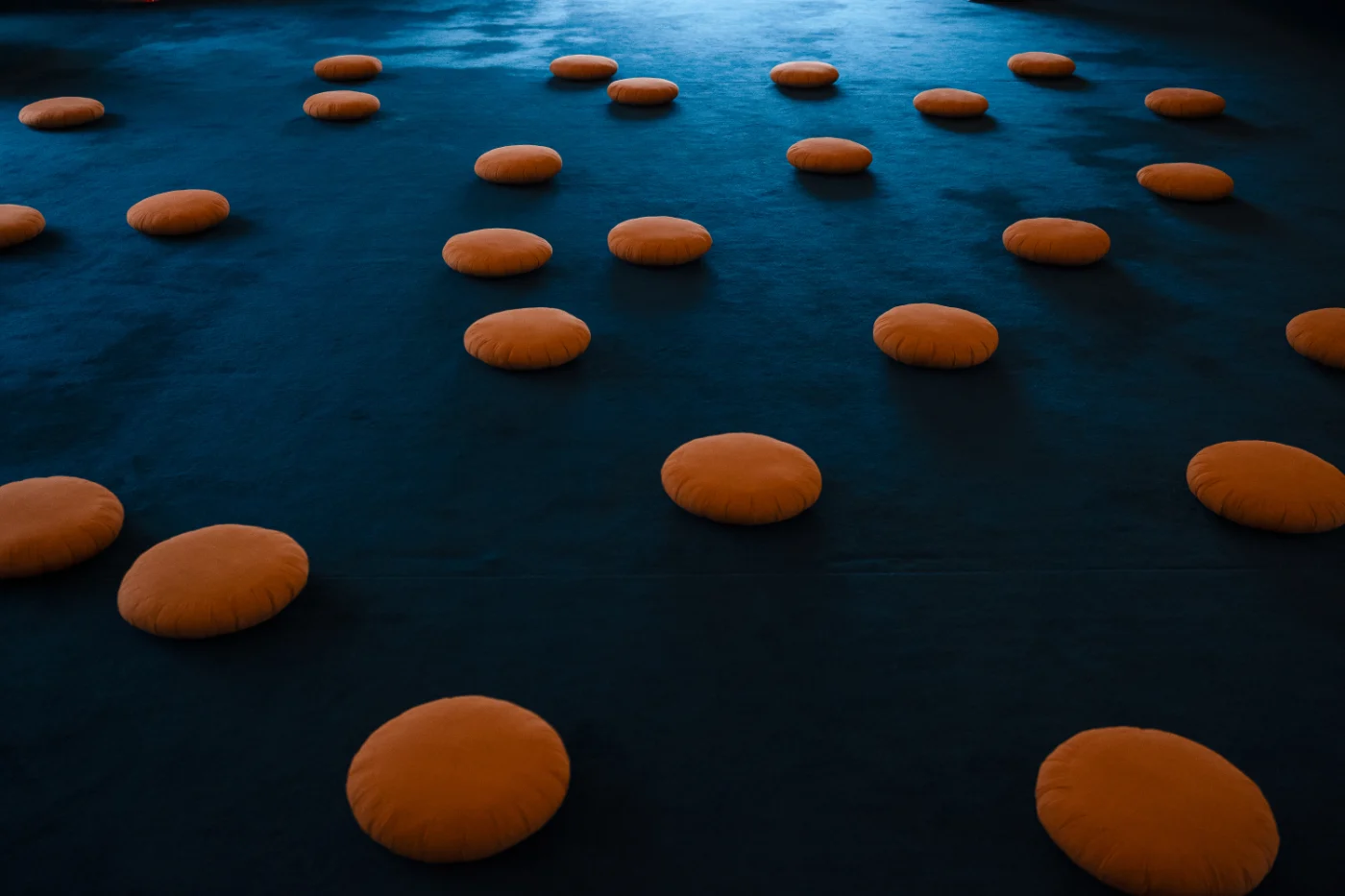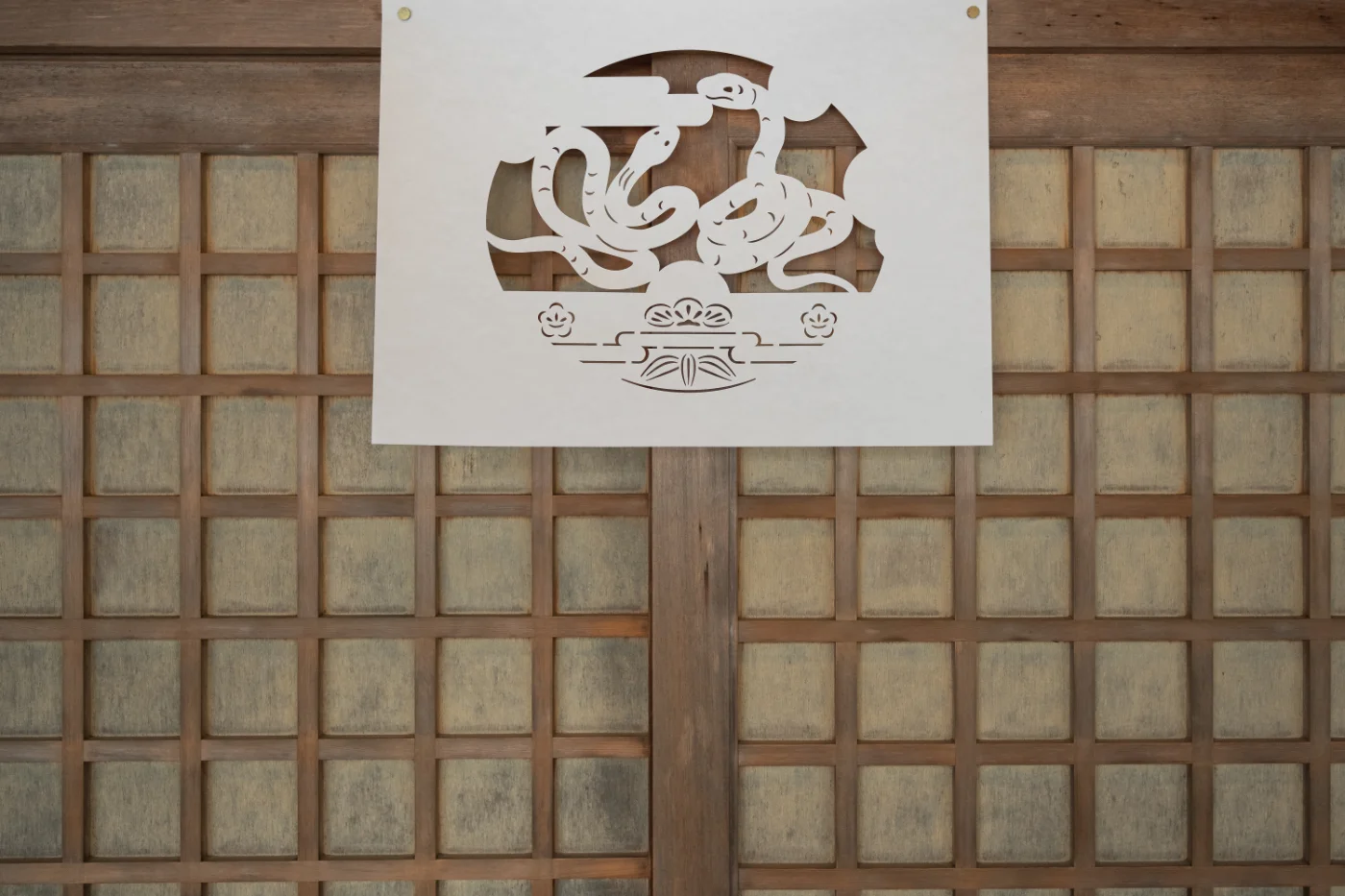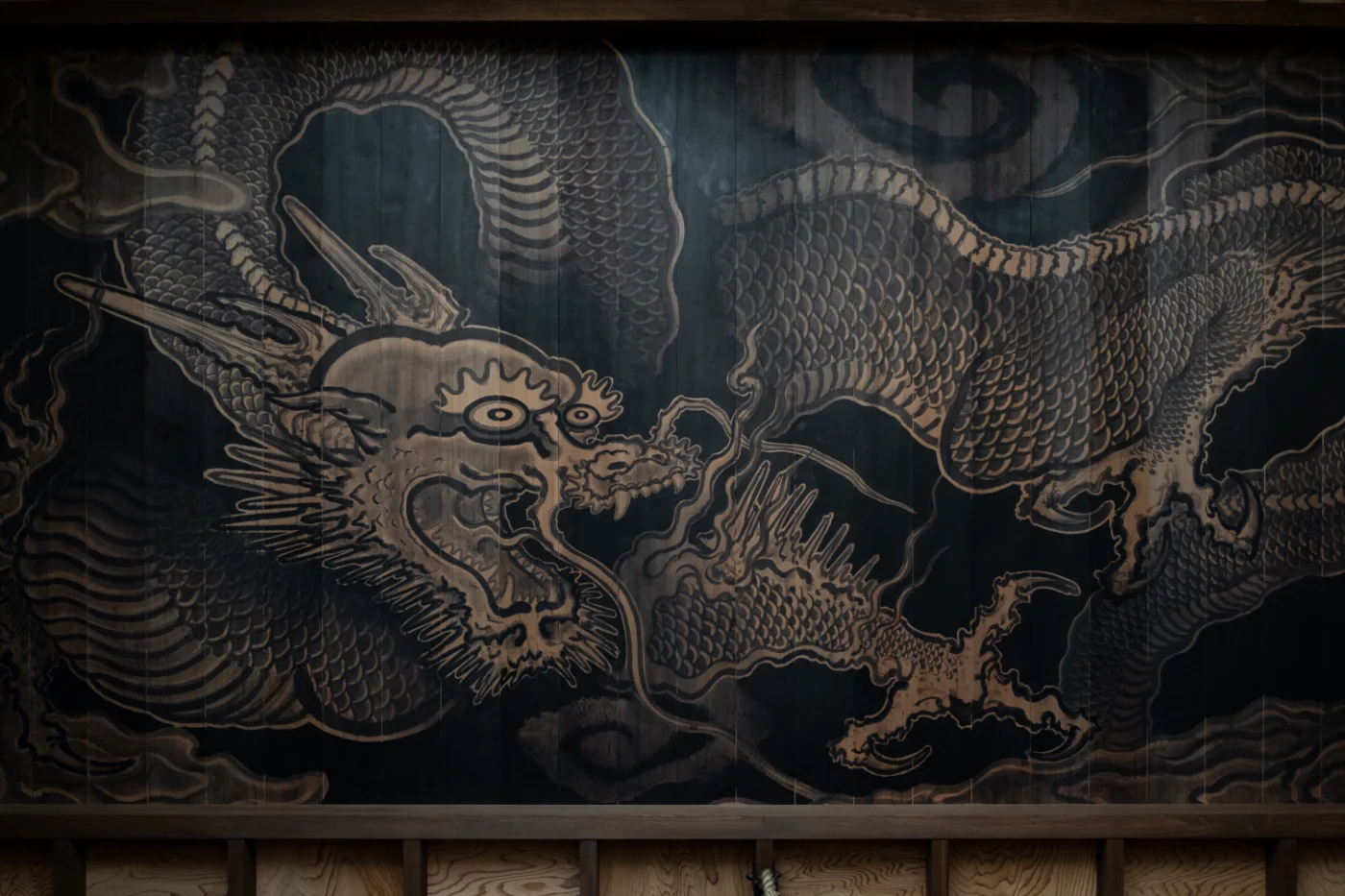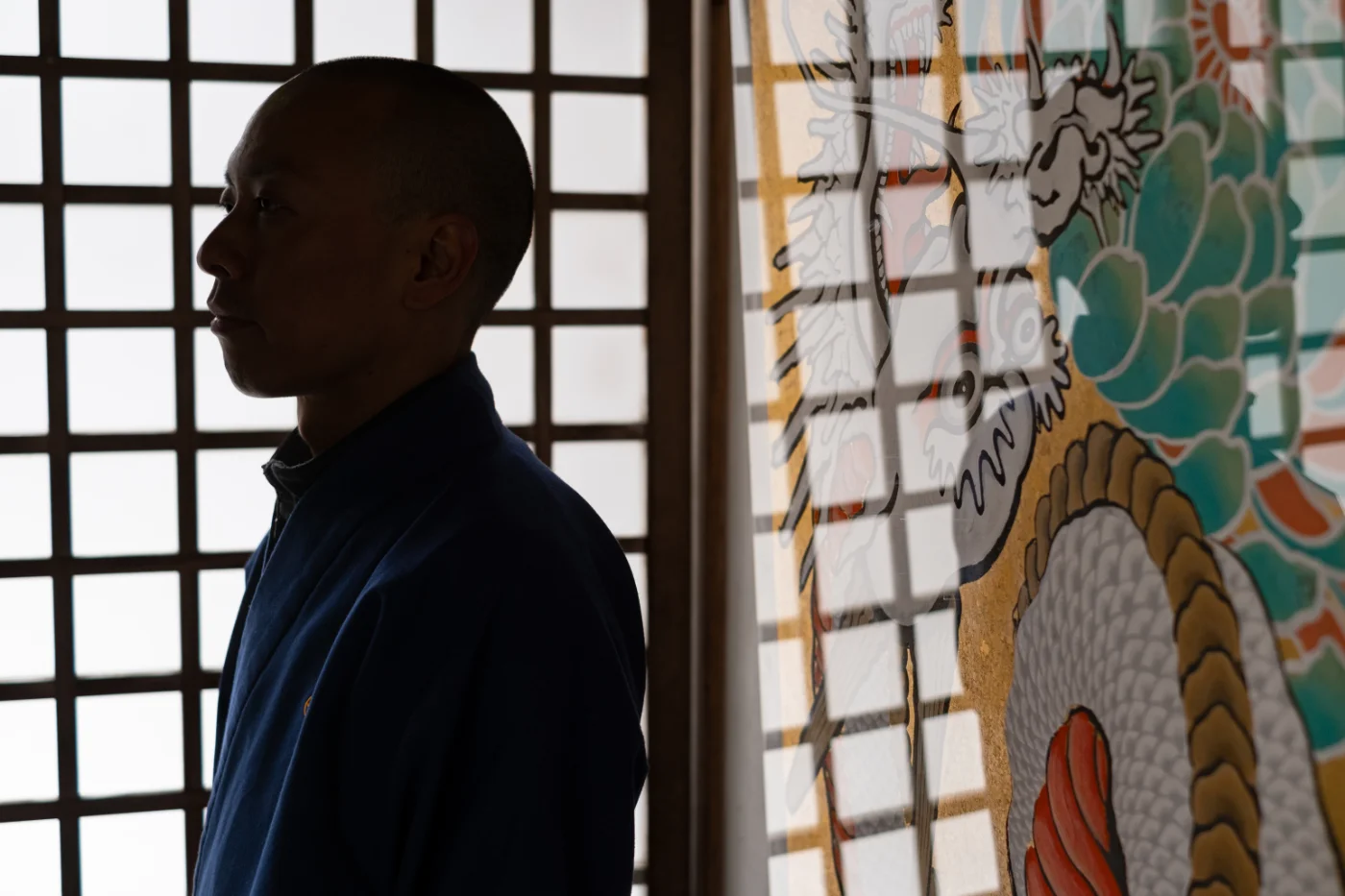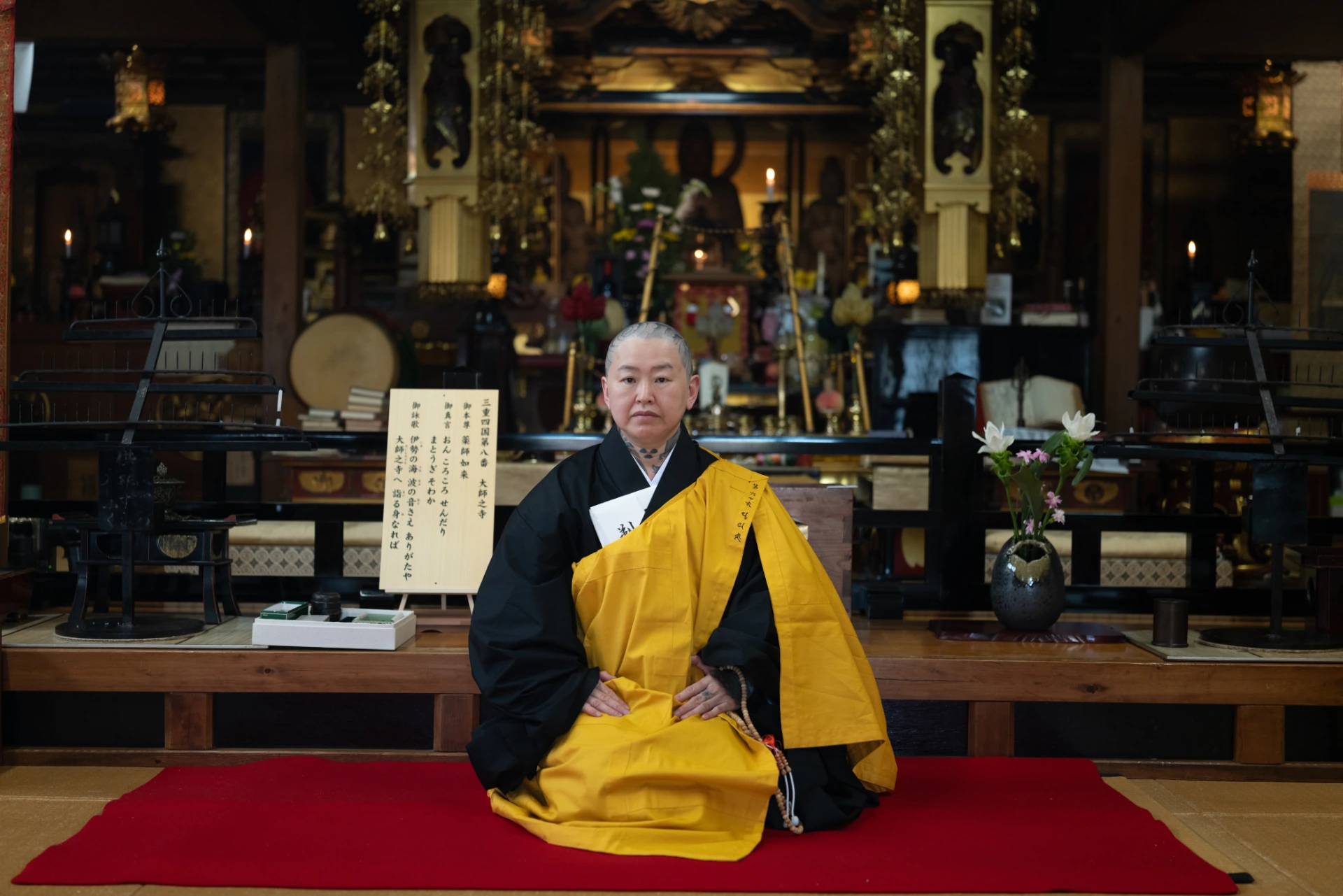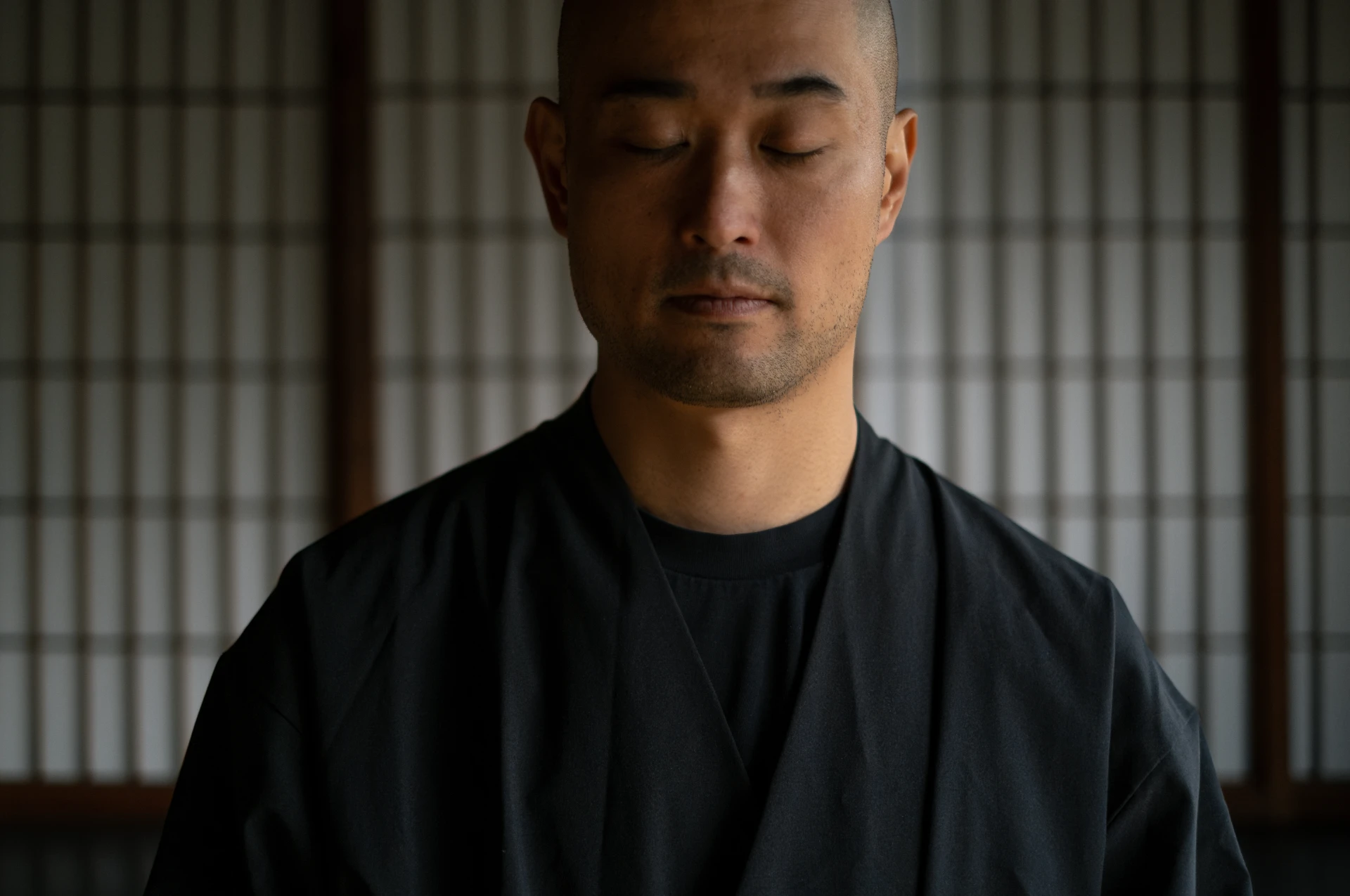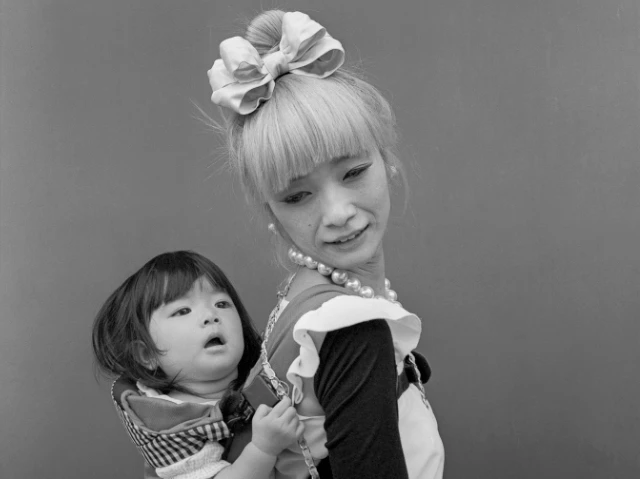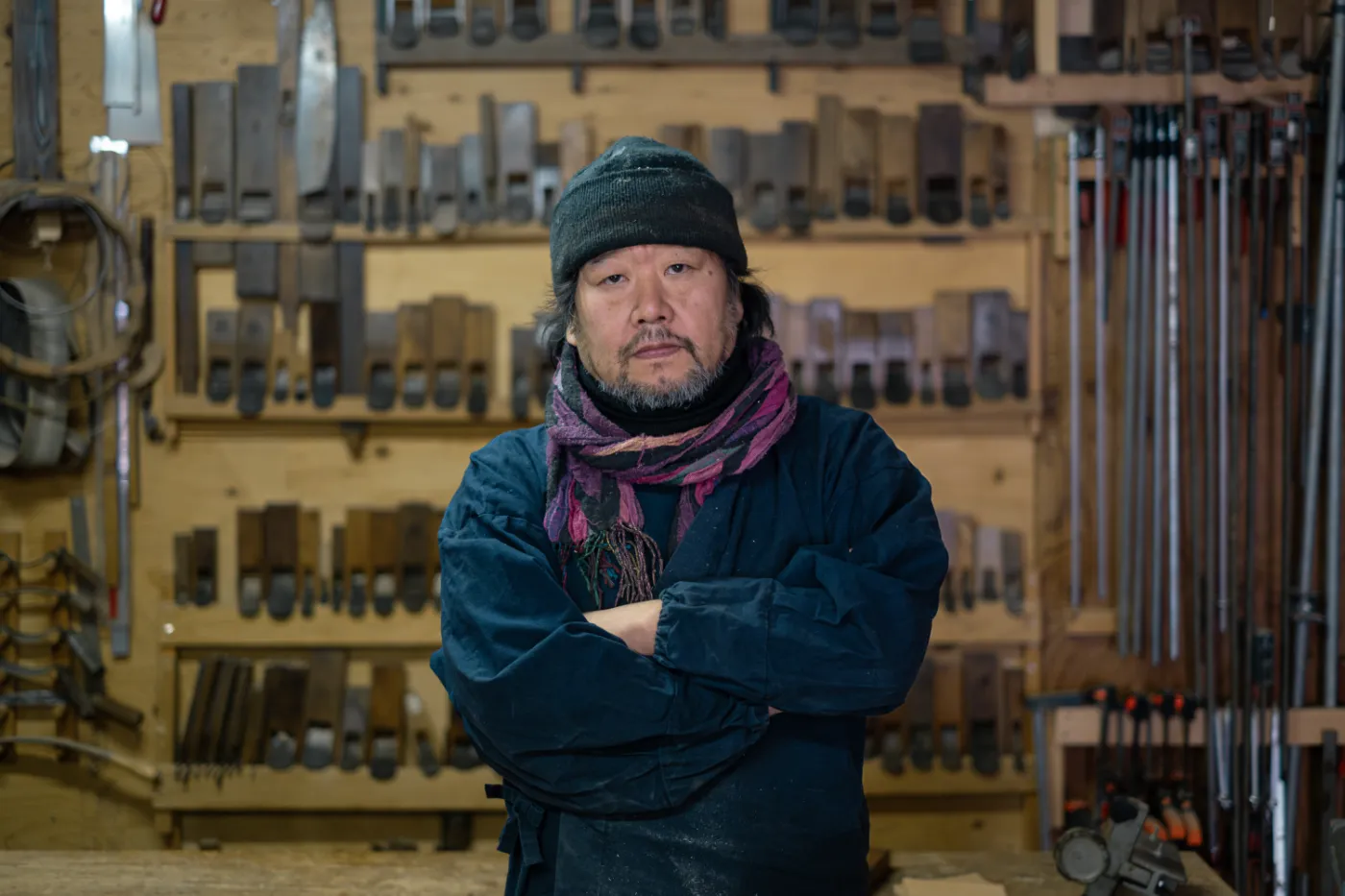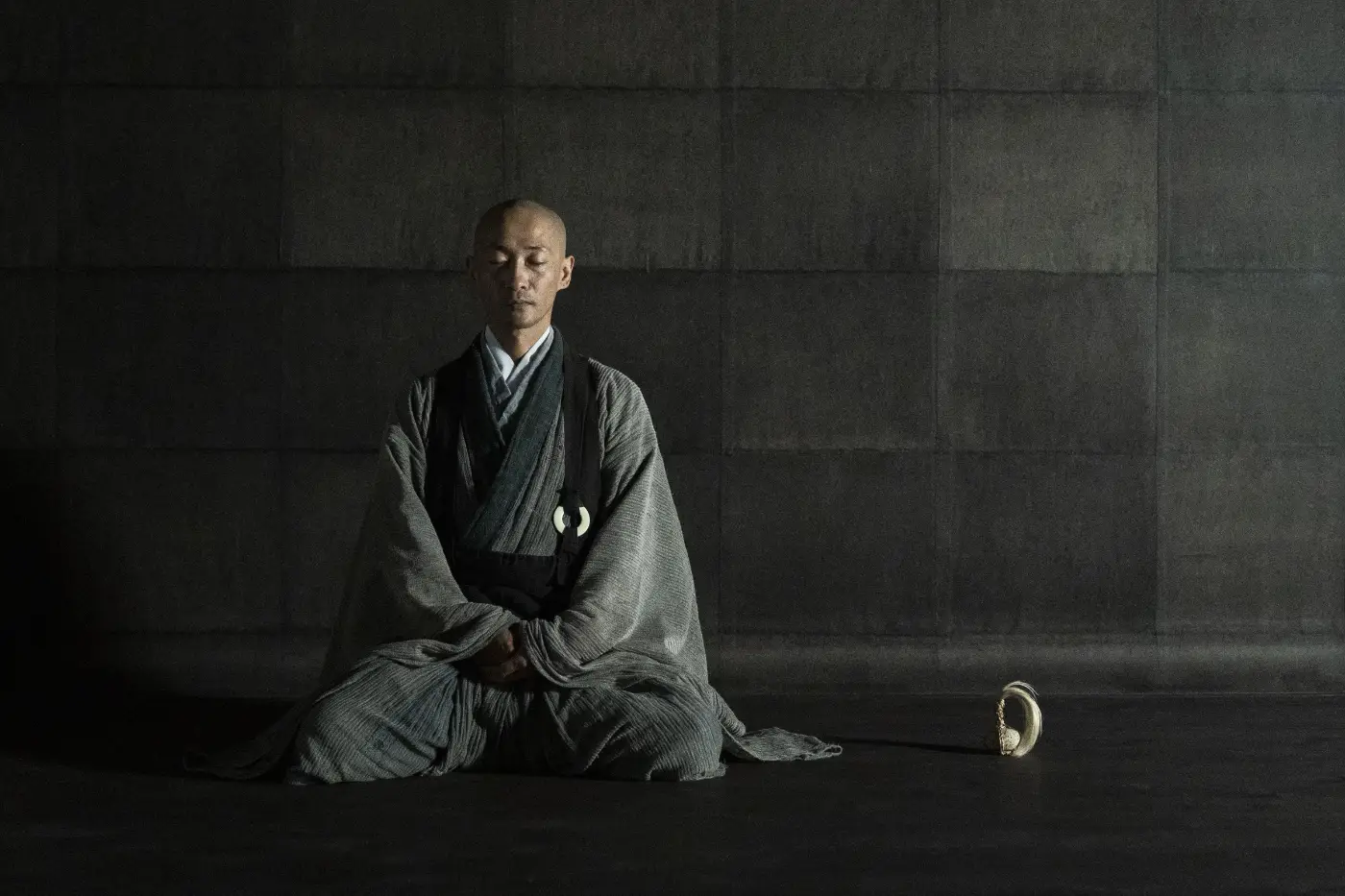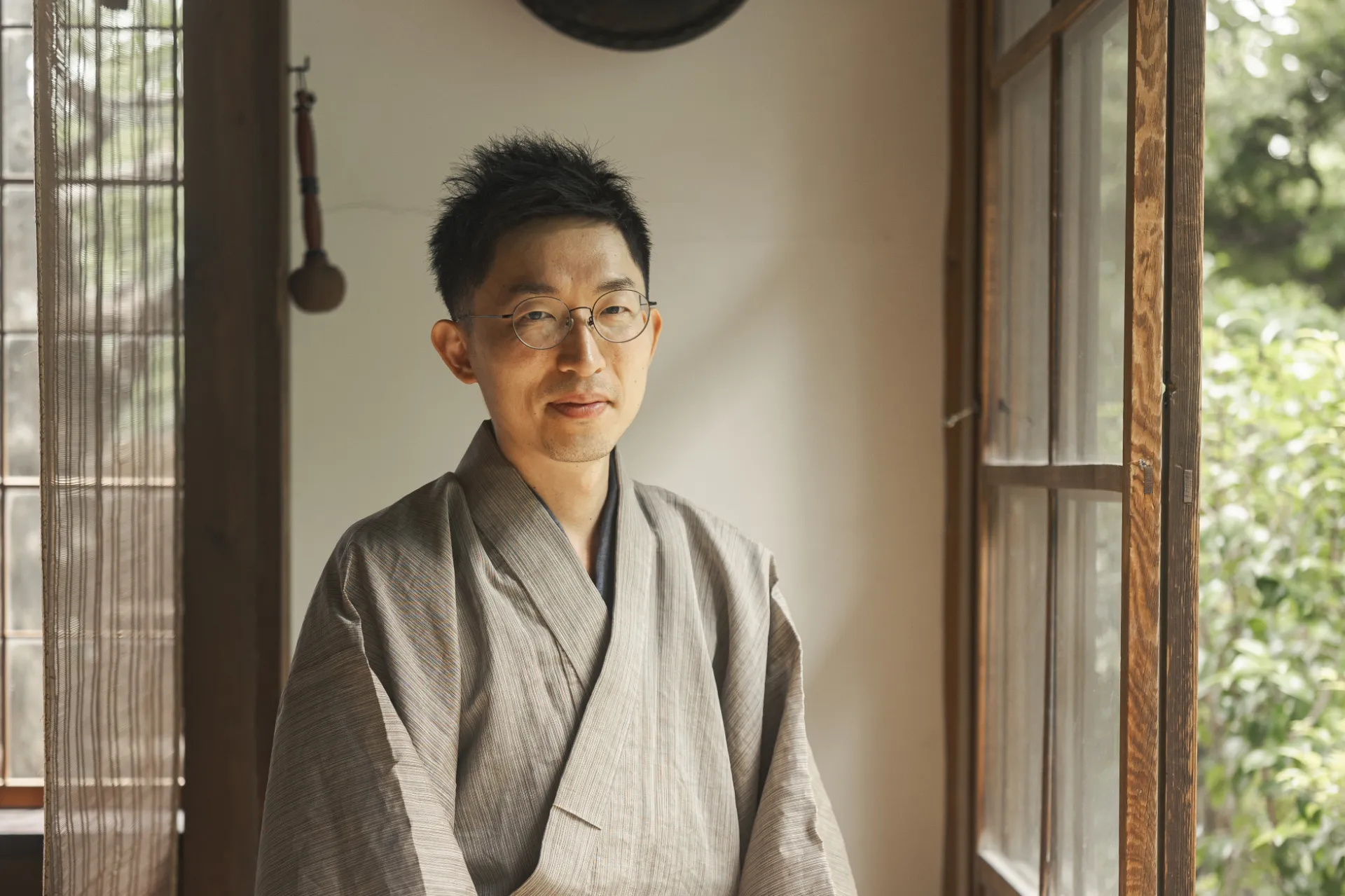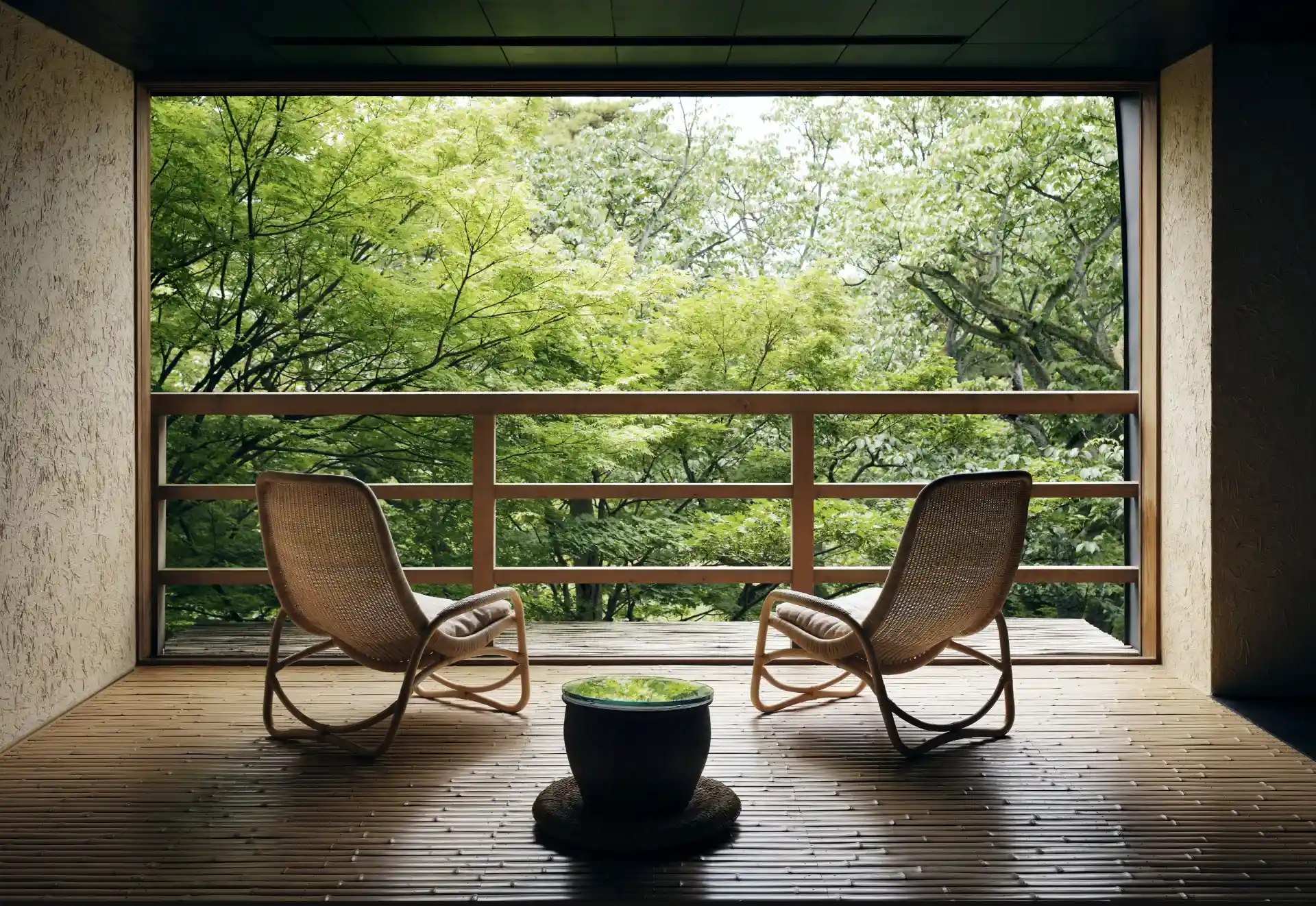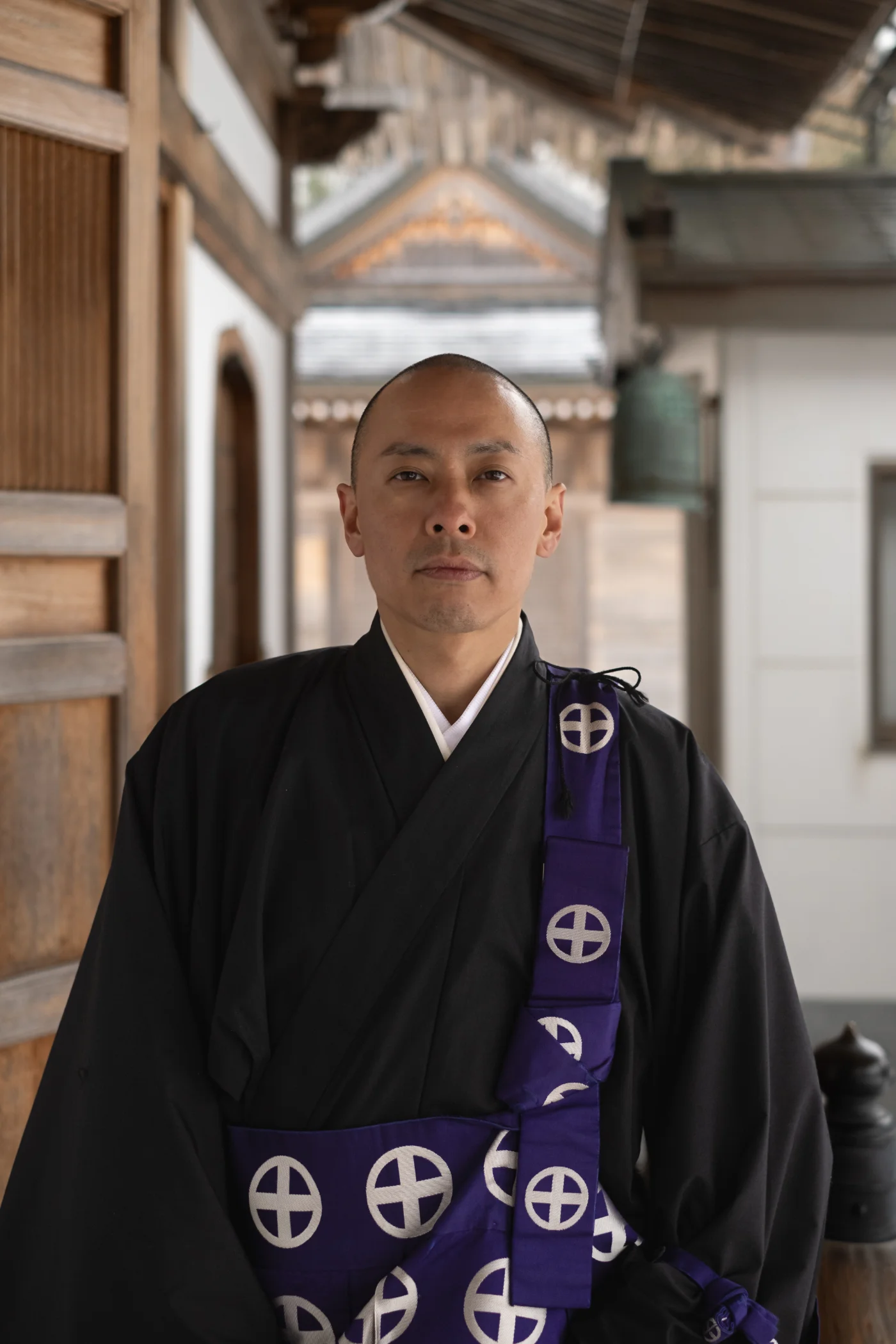
Gradual Appreciation
Where are you from, and what was your initial introduction to Buddhism?
I was born and raised in Kobe, where the famous wagyu beef comes from.
As a kid we learned about Buddhism in school, but it was always about death or the afterlife. For a child this can be a bit scary or boring, so I actually didn’t like Buddhism much. However, as I grew up, I gradually began to appreciate it more. My mom often took me to the temple and now I realize that the morals we are taught and that we embody often originate from Buddhism; like why we can’t lie or can’t do specific things.
I think all Japanese people who are born and raised in Japan are taught a form of Japanese Buddhism implicitly, but the teachings are so entrenched in our lives, we just don’t realize it. I feel lucky to have recognized its influence and presence..
What were you doing before you came to Koyasan?
While I was at university, I started looking for work and attended many recruiting sessions. It was about 15 years ago, just after the economic crisis in 2008. The Japanese economy was in recession, so most Japanese companies believed they needed to expand their business overseas.
This gave me the idea to travel overseas before entering the workforce. I did many part-time jobs to save money and started traveling through southeast Asia. During my travels, I realized I couldn’t speak English at all, struggling to communicate my thoughts and deeply interact with other people, so I decided to take a break from backpacking and go to Australia to learn English.
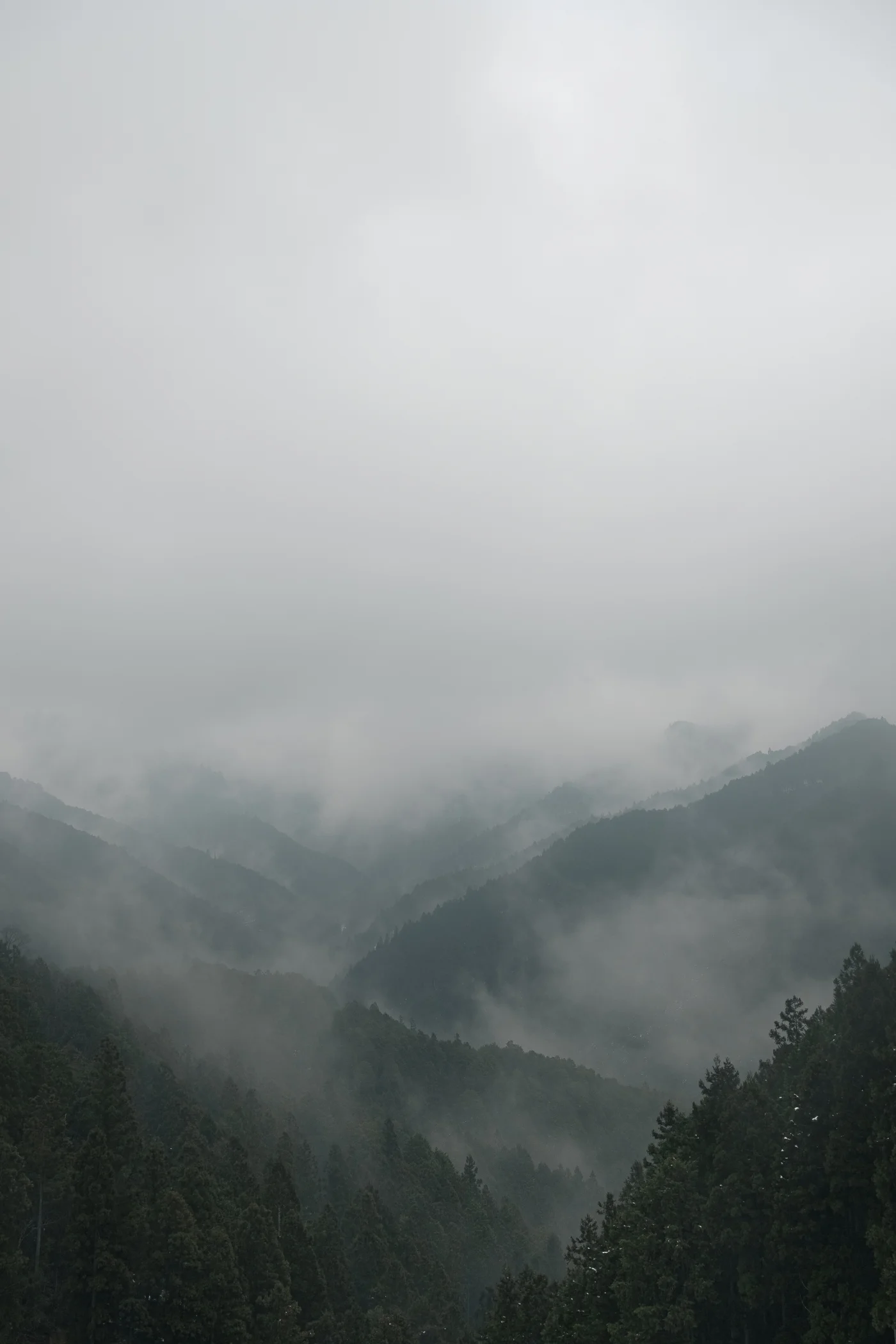
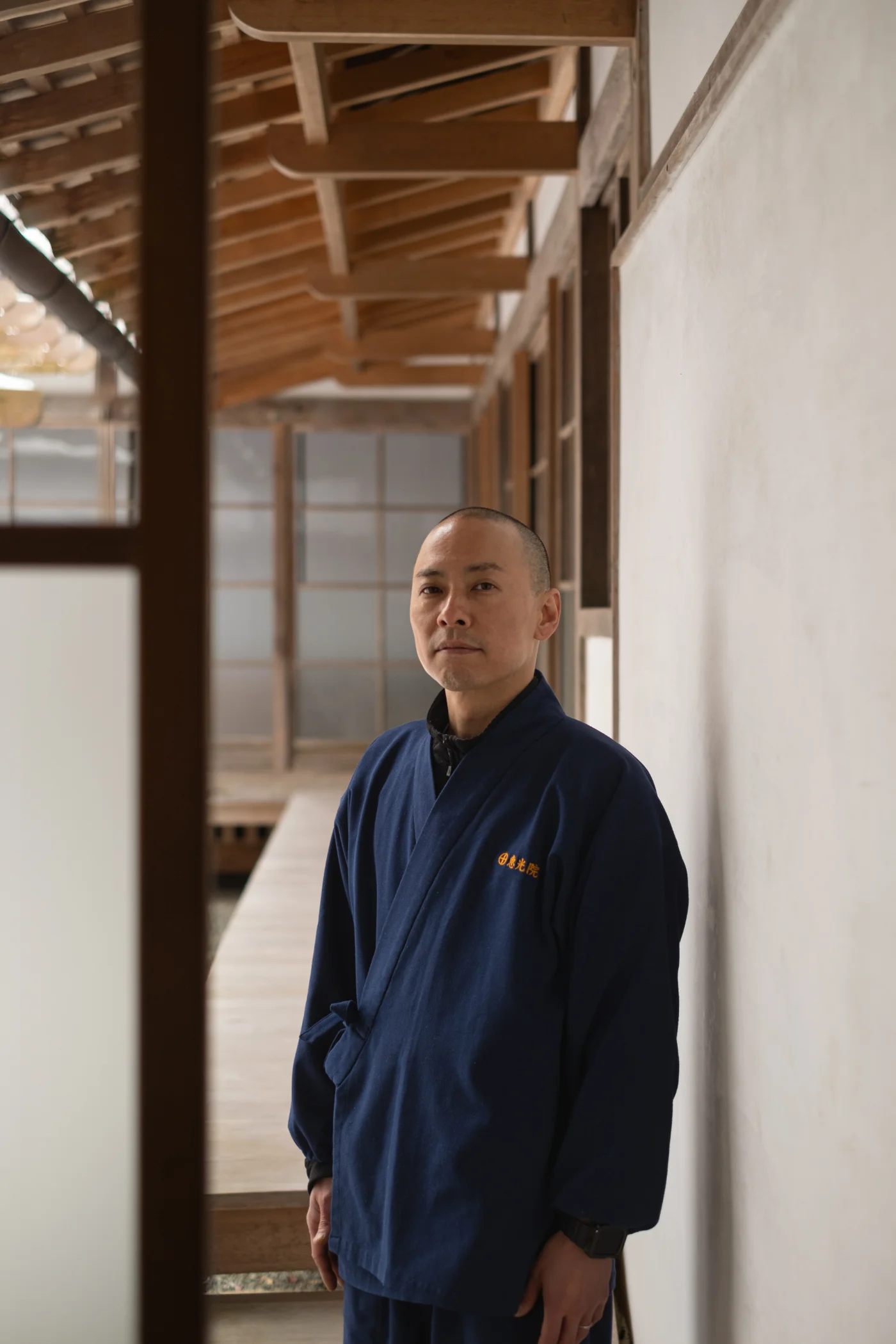
Finding My Calling
After a year I returned to Japan and joined a trading company which imports and exports material to make clothing. After working for this company for three years, I decided to return to Australia to pursue my dream to run my own guest house and look for inspiration. I worked on fruit farms, commercial boats fishing prawns, and sold accessories on the street, like a hippie.
I started meditation in Australia because I was exhausted, both mentally and physically. Since there was no one to teach me how to meditate, I Googled how to meditate and read many articles. Many stated that the key to mastering meditation is consistency. One particular article stated that if you meditate for more than eight weeks consecutively, you’ll start to experience the effects.
Feeling hopeful, after 5-6 weeks of meditation, I suddenly began to cry without reason. I felt a clarity, as if my mind was purified. I think that was when I found my calling. I also began to accept myself more, and in turn started loving myself as well as loving someone else.
This led me to go to India to learn more about meditation. After my studies in India, I came to Koyasan.
What initially drew you to Koyasan?
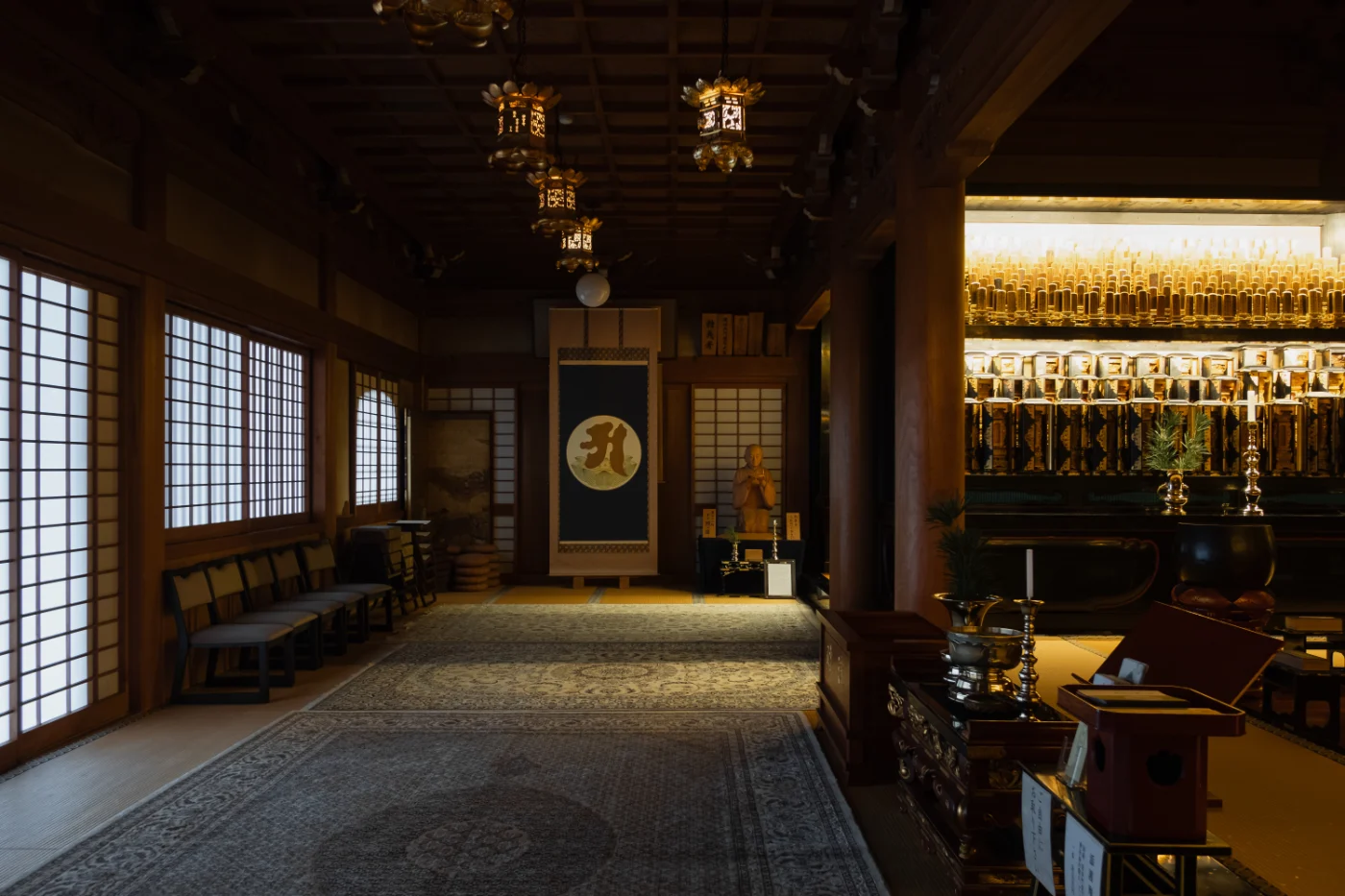
I Wasn’t Supposed to Be a Monk
I have a friend who was working at Eko-in, so I actually just came to Koyasan to visit him. I knew him from high school, and during his training in Eko-in, he kept asking me to visit. He was the son of the temple head. In Japanese Buddhism, monks are allowed to marry and have children. It is often the case that the son of the temple head becomes the successor, while his wife helps to support the temple.
What made you decide to become a Shingon Buddhist priest at Eko-in?
When I first arrived at Koyasan, I wasn’t supposed to be a monk. The thought had never crossed my mind, but the longer I stayed here, the more people asked me to become a monk. With time, I began to change my mind.
I found myself drawn to the teachings of Shingon Buddhism and found similarities to what I learned and encountered in Australia. In esoteric Shingon there is a teaching that we should gain knowledge from the universe and nature. This resonated with me, as I had experienced the power of nature in Australia first hand. After spending two years at Koyasan I made the decision to become a monk.
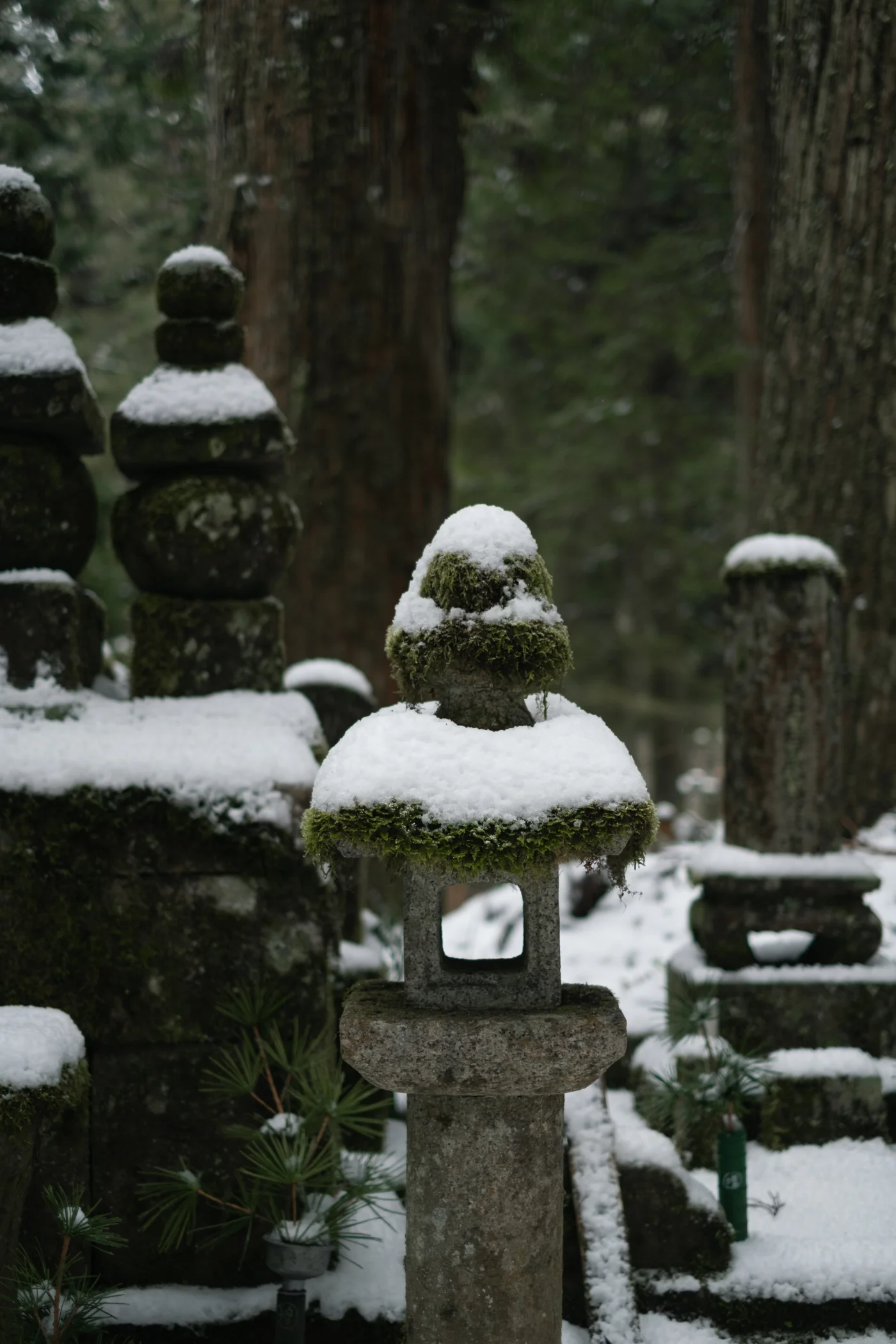
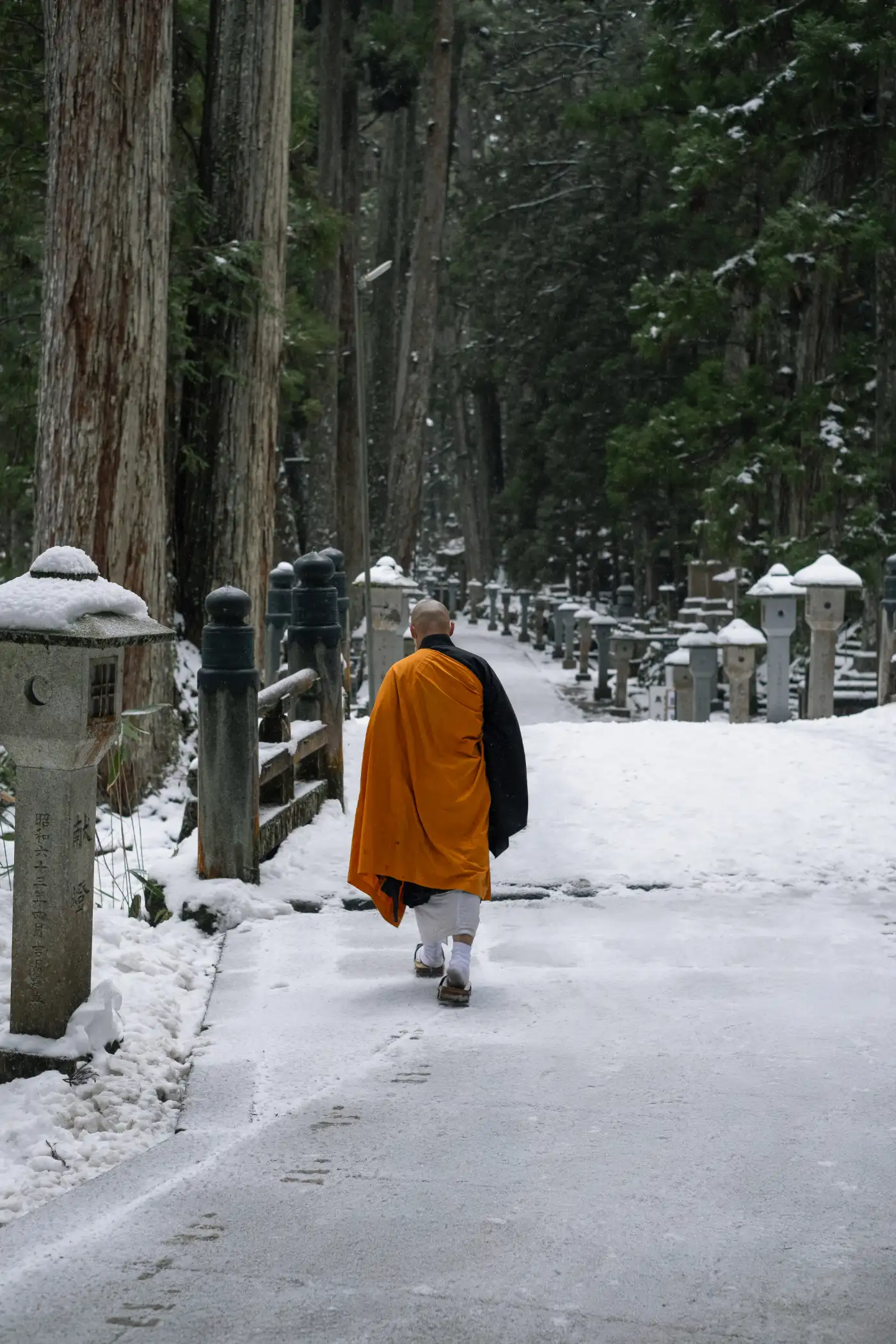
Heaven Exists in this Life
What is Shingon Buddhism and what makes it unique?
My master, who passed away four years ago, told me the difference between esoteric Shingon Buddhism and many non-esoteric Buddhist schools is that they value the afterlife, but in Shingon Buddhism we value this life. Many non-esoteric Buddhist schools preach that heaven or nirvana exists in the afterlife, while esoteric Buddhism teaches that it exists in this life, and you can find heaven on this earth, if you try to look for it.
Kobo Daishi is the founder of Shingon esoteric Buddhism. He was born in Kagawa, on Shikoku island, in 774. Although destined to take his father’s place as governor, he decided to pursue a different path and at 31 years old crossed the sea to China to learn about this esoteric Buddhism. In this foreign land he met Keika Ajari, who was to become his mentor for life. Keika Ajari was a Chinese monk and the seventh successor of esoteric Buddhism. As soon as he laid eyes on Kobo Daishi, he said to him, “I’ve been waiting for you for a long time. What a joy to finally meet you.”
After his training, Kobo Daishi brought esoteric Buddhism back to Japan, began sharing his knowledge and founded Koyasan as a Buddhist training center. Kobo Daishi was known for being enterprising. He used his knowledge of Buddhism not only to help many people, but he was also a poet, engineer, teacher, doctor, scholar. He founded many onsens, and was the first person who established a public school in Japan. At 62 years old, he went into eternal meditation to save all the people until they would be enlightened. In Koyasan, we have the cemetery and tomb where we believe Kobo Daishi has been meditating for 1,200 years. Many people still visit him today.
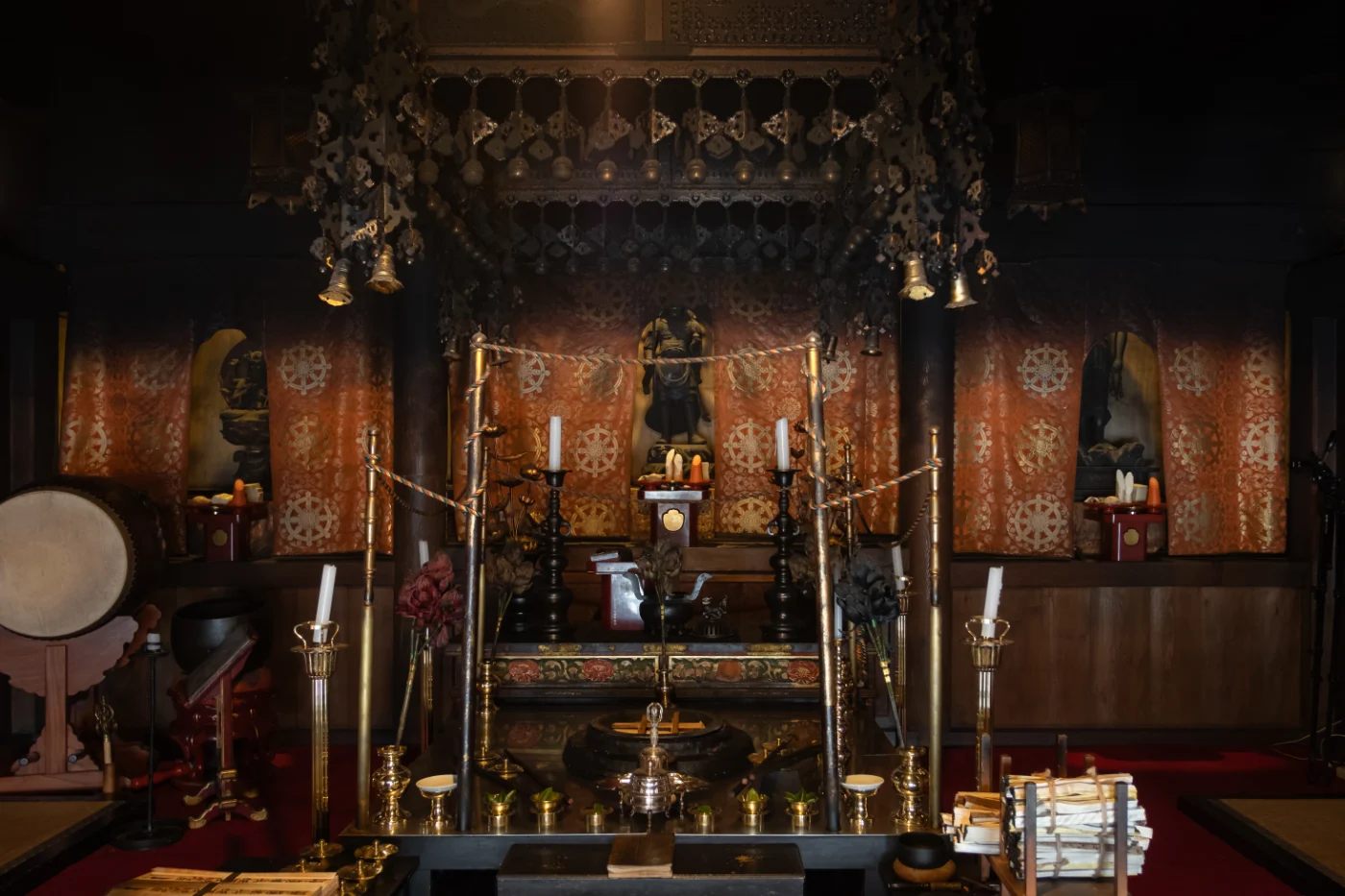
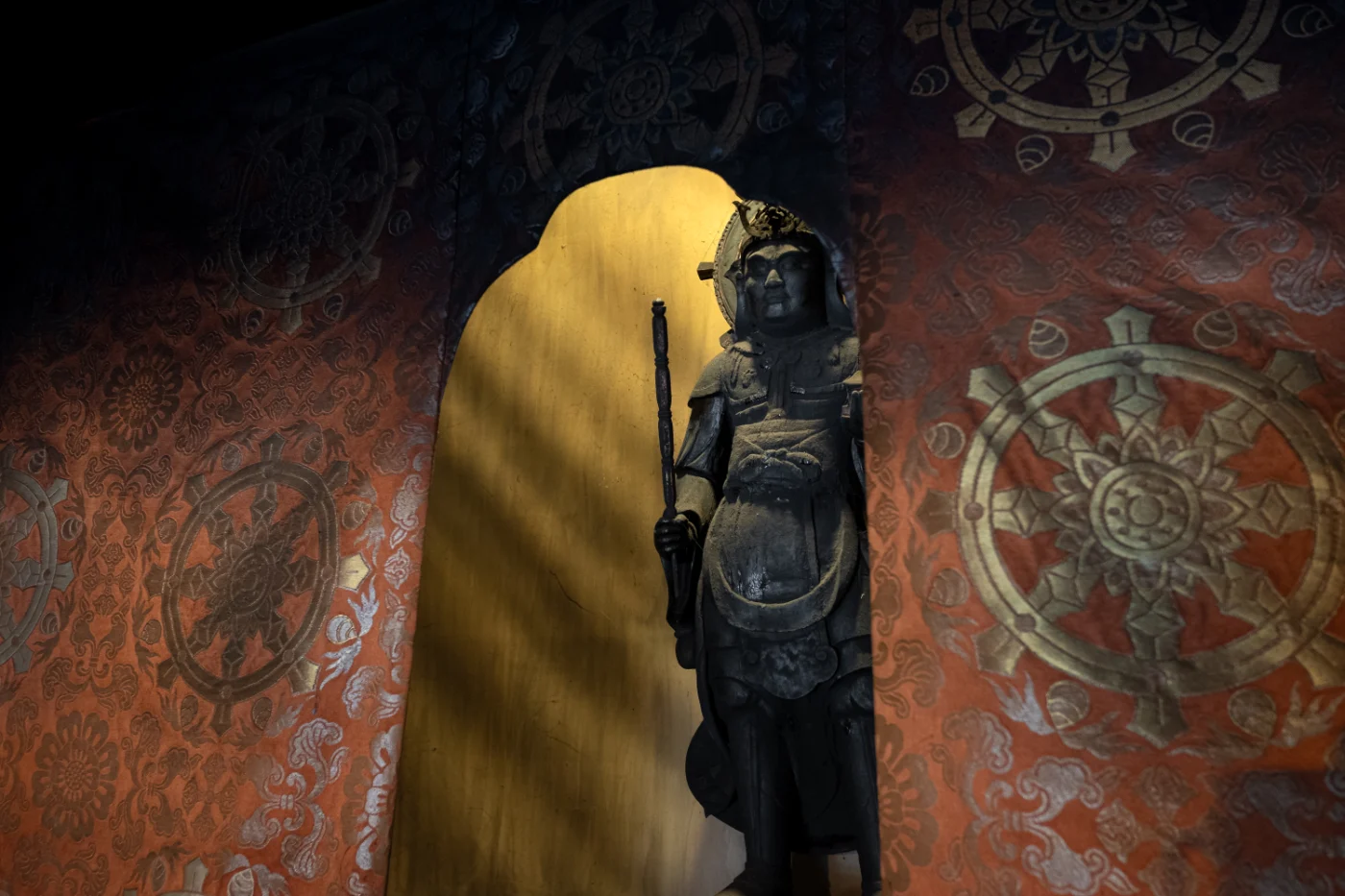
Knowing Yourself
What are some of its most important teachings and practices?
I like the saying, where Kobo Daishi said, ”The teachings of the Buddha are not distant concepts; they exist in our own hearts and do not need to be sought elsewhere. How can one attain true enlightenment if we forsake our own body?” I agree that the quickest way to achieve enlightenment is to know yourself.
One of the practices I find quite powerful, and that is unique to Shingon Buddhism, is the Goma Fire Ritual. During this ritual, monks burn wooden sticks in a sacred fire. The fire symbolizes the wisdom of Buddha, while the burning wood embodies what is to be cleansed. Many other Buddhist schools practice memorial services for the people who have passed away, but the Goma Fire Ritual is for the living. With this act of cleansing through fire, we hope to help people, in the present, to be more at ease, find happiness, and ultimately to attain enlightenment in this lifetime.
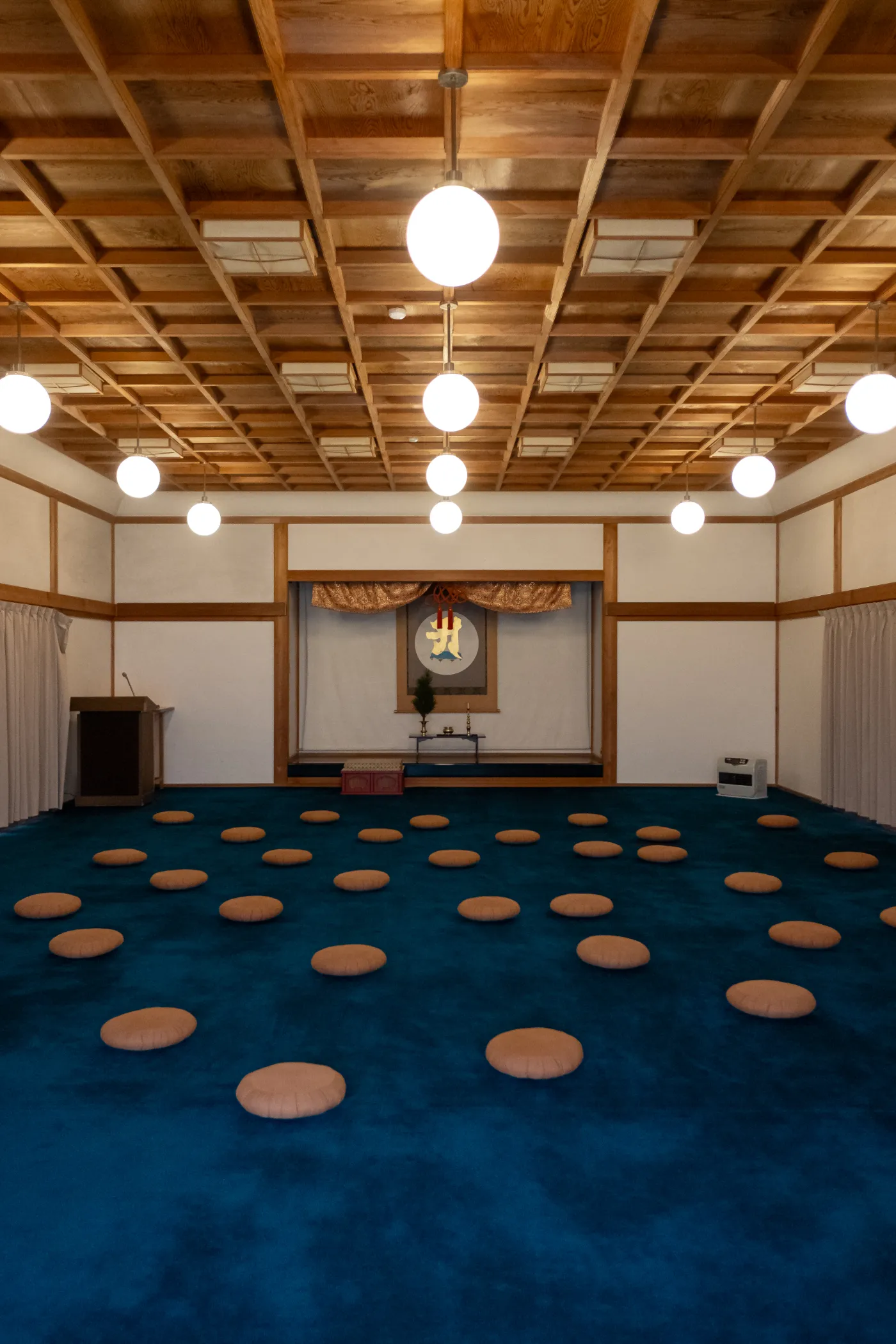
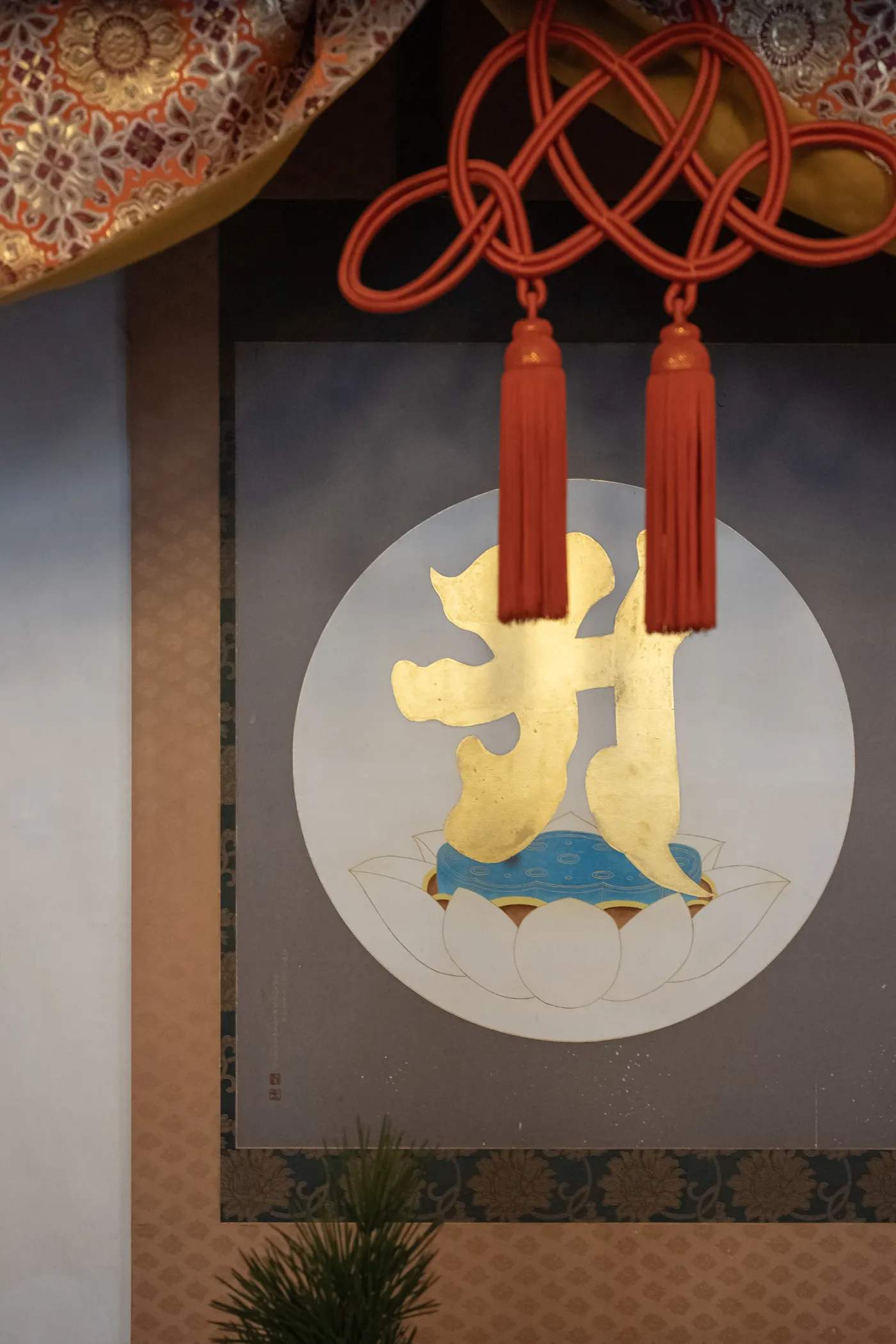
Ajikan: Becoming One
What other practices does it offer that you feel are particularly relevant in contemporary society?
We have a method of meditation called Ajikan meditation.
During the meditation, we sit in front of a scroll with a picture of a full moon and the Sanskrit symbol, “A” written inside of it. This sacred character symbolizes the universe, and the cosmic original Buddha. It also symbolizes your own being. In this meditation, we try to become one with this character, which means we try to become one with the cosmic Buddha and universe. It’s a powerful way to experience Oneness with all of existence.
The full moon represents the wisdom of enlightenment, the realization of this oneness and deep intimacy with the universe. However, one has to remember that enlightenment doesn’t only come through self reflection. There is much to be learnt from nature, the universe, and even the people you interact with in your life. Through meditation our mind becomes open and receptive. Then you begin to notice how much there is to learn from the world.
Like right now, I’m learning from you and our conversation.
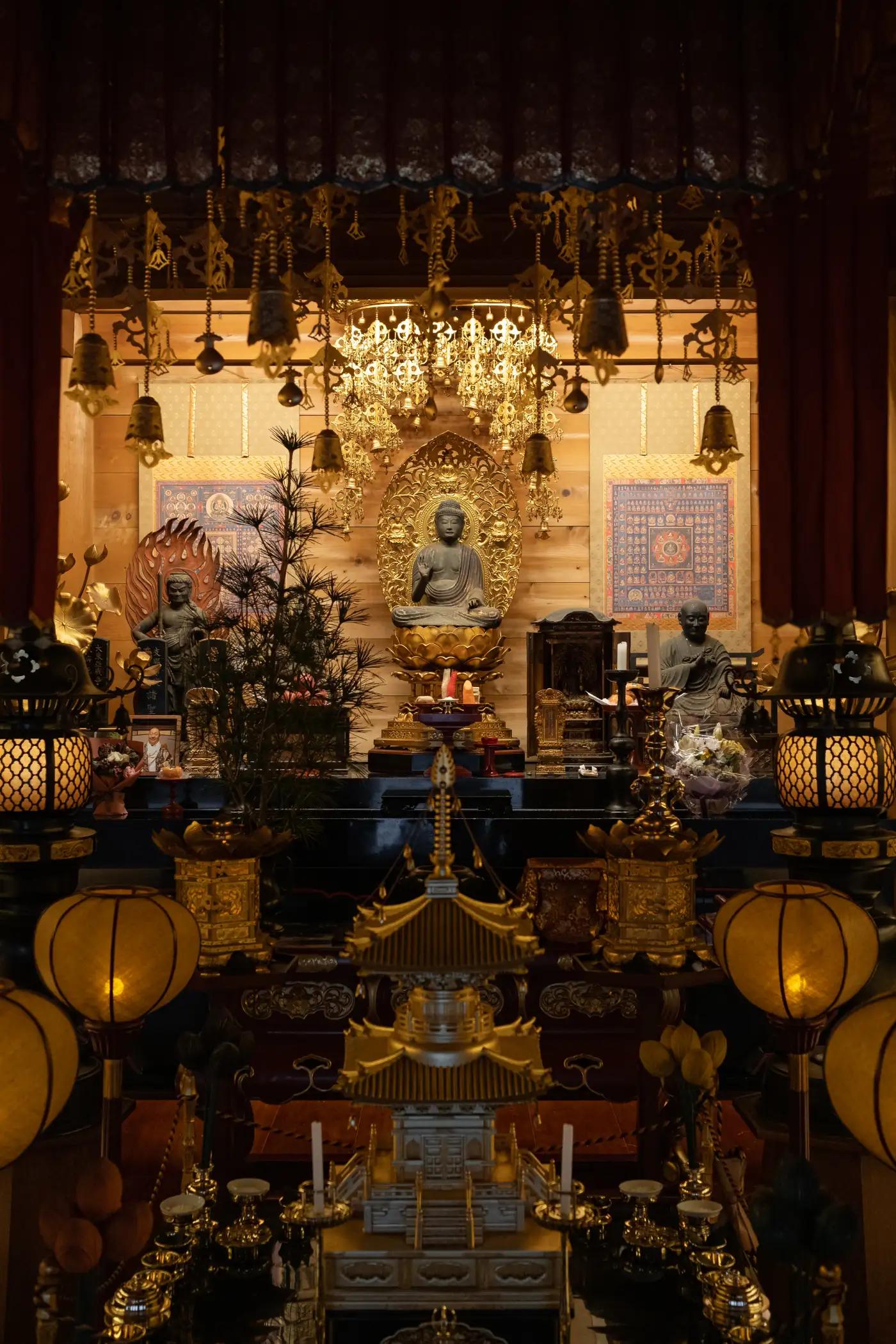
Without Ancestors, We Don’t Exist
What was the training period like?
During my training, I had a chance to pray in the hall in Okunoin cemetery. I was praying in front of the statue of Kobo Daishi. I was brought to tears because I finally understood how important it is that we pray to our ancestors or buddhas, because without ancestors, we don’t exist. It wasn’t something I registered with my brain, but rather a mysterious embodied experience, a felt sensation in my body.
There were many repetitive tasks like this we had to do during our training, without knowing the meaning behind them. Only the people who have taken the training can know the lessons of these tasks.
In Shingon Buddhism there are actually many rituals and practices that don’t rely so much on your thinking and rational understanding, but more on doing things with your body. Like certain mudra hand postures or making certain sounds by chanting, which then reverberates in your body. These practices shape your senses and your receptivity to the world in very real and powerful ways.
I think the most important teaching that I learned in Buddhist training is to have appreciation for anything. If you can learn to appreciate even the smallest things, your life becomes more colorful and joyful.
What does an average day look like for you?
At the temple I mostly host the guests staying at Eko-in as well as do some administrative work. In the morning, I attend the morning ceremony and Goma Fire Ritual. After that, I spend the rest of the morning doing office work. In the afternoon, we have the guests checking in, so I attend to the guests. I also teach meditation. There are also occasions where I conduct the cemetery night tour, which is explained by the monks.
I was told by my master that to host guests or help people is the most important job of a monk. These acts can also serve as training, but I believe Japanese monks exist to help and to save people. We are not trying to be enlightened by ourselves. We believe more in the importance of helping others.
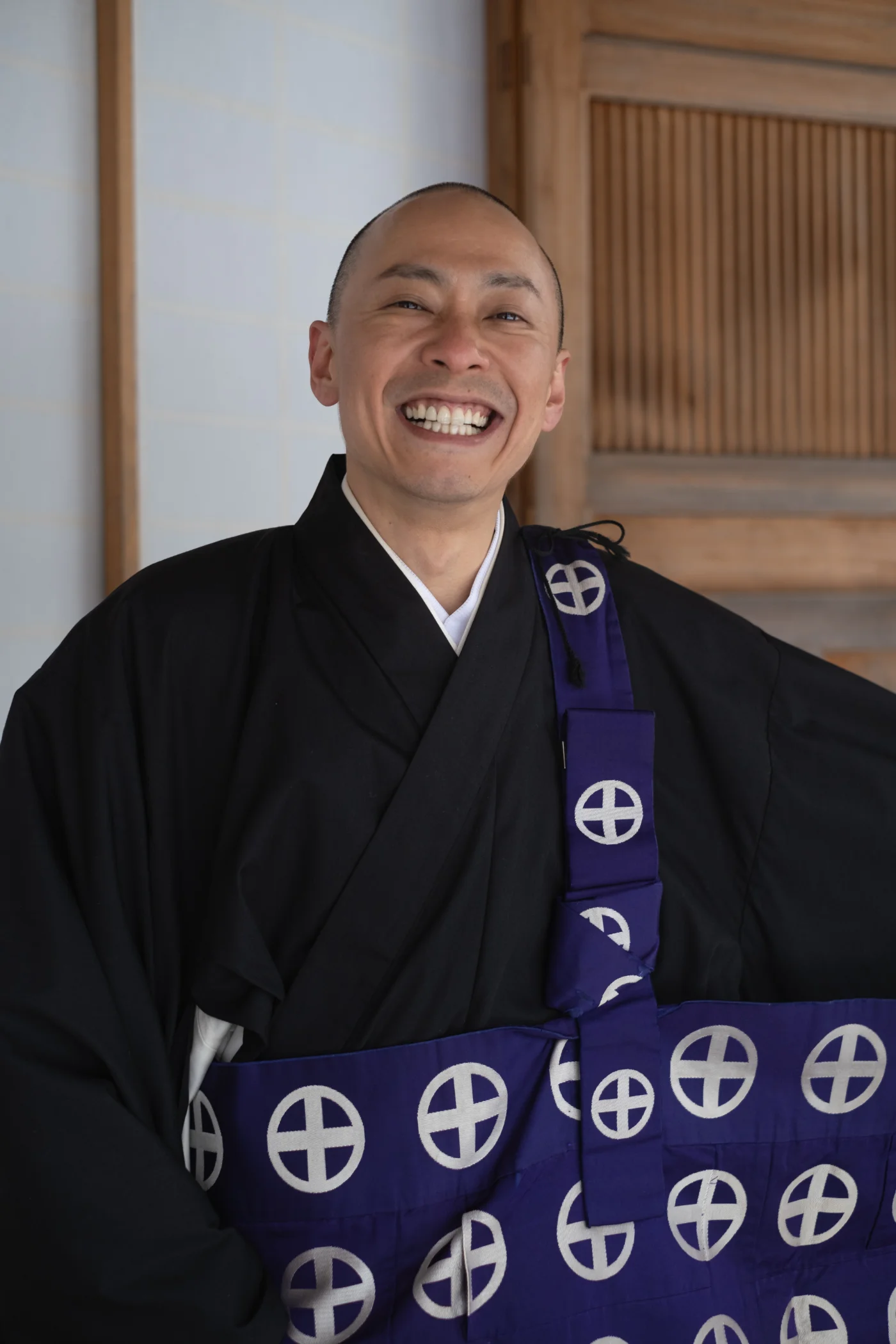
Anyone Can Find Happiness in Their Life
What are moments of greatest happiness or fulfillment for you?
I think definitely having a family, getting married and having a daughter. The fact that Japanese monks are allowed to get married convinced me to become a monk. I think it would have been quite challenging if I had to give up on having a family.
Where do you find beauty in life?
I think anyone can find happiness in their life. Even if you’re rich it doesn’t mean you’re happy. The opposite is also true: if you don’t have much money, it doesn’t mean you are not happy. Happiness can come to anyone who makes the effort. I found beauty in life by recognizing the small happinesses in daily life.
What has been most challenging?
The last five years were the most challenging period in my life. Maybe the first reason being I lost my master, who I spent the most time with. He was the previous head monk, and father of a present head monk. I still feel sad sometimes. His passing also changed the temple and the people within it. With this new working environment and direction of the temple, I too needed to adapt.
Also, I got married and had a daughter, so I think my daily life has changed a lot since the birth of my daughter. She’s like [laughs] – she’s a monster now, but she’s also my treasure. Having someone to provide for, there are so many newfound things that I need to care and worry about.
Also, in these five years, I became a monk, and this alone has changed my lifestyle. So many things have changed.
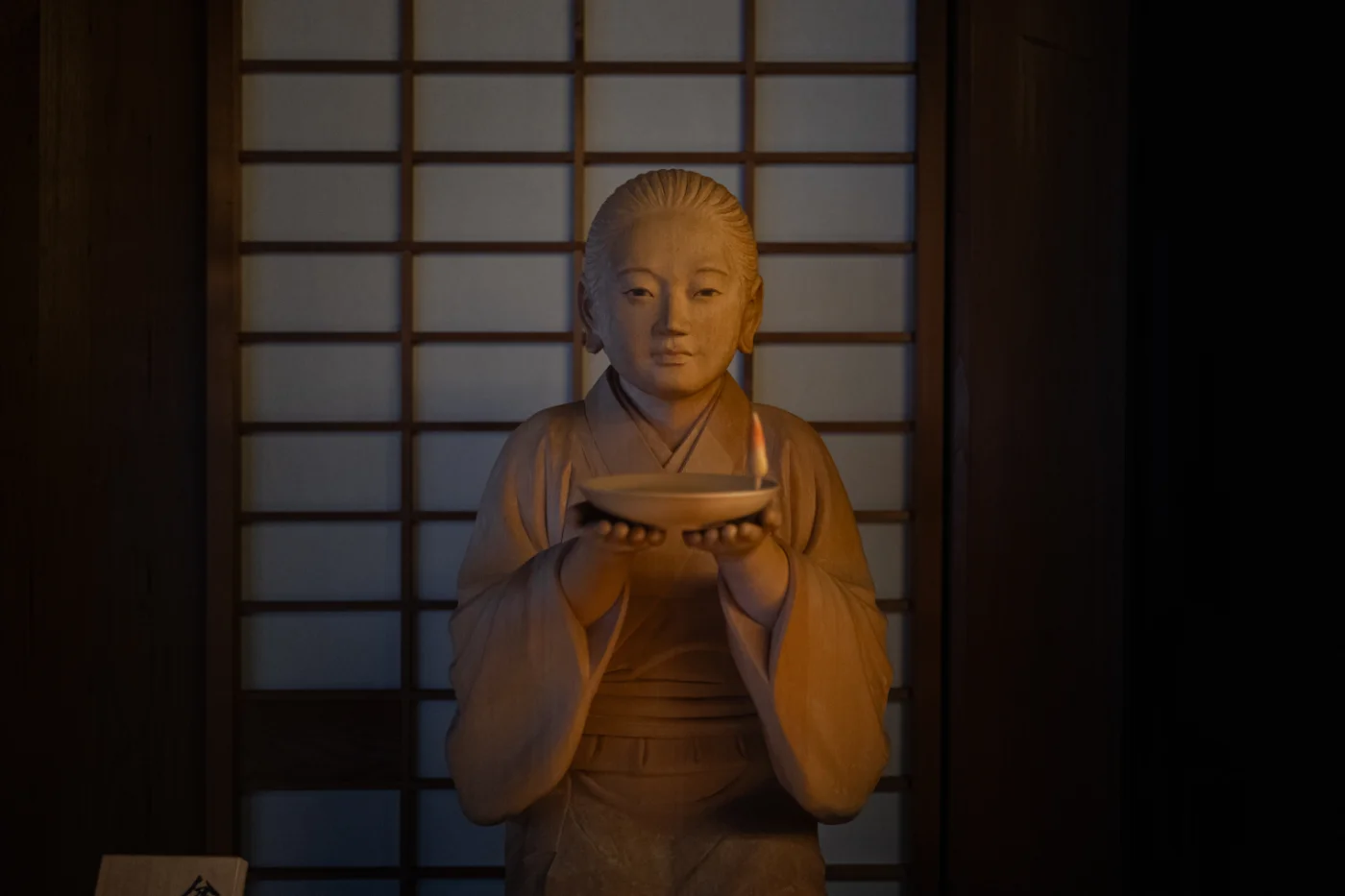
Giving Back to the Universe
Looking into the future, is there something you care deeply about and hope to realize?
I would say there are two things I wish to realize.
The first is spreading meditation to Japanese business people. As I said earlier, people today, especially those who work for companies, are stressed and can be so busy with so much information. I believe meditation could help them. Companies like Google, Nike or Intel, and other American companies, have introduced meditation into their programs. I wish to do the same for Japanese companies.
Another one is my wish to give back something to the universe. I was helped by so many people while I was traveling and I realized that Japan is special for me, in both a good and bad way. I love this country, so I hope to introduce Japanese culture to visitors to Japan. Specifically, I aspire to increase the number of foreign people who take part in the eternal memorial service at Eko-in.
Now, if you visit our main temple, you will find many mortuary tablets. Memorial tablets are similar to graves, as well as objects of prayer. We believe the spirits of deceased persons return to these tablets when a family member or descendent comes to visit them. It’s a kind of home for our ancestors.
The majority of people who have taken part in the eternal memorial service at Eko-in are Japanese, but we also have some memorial tablets for foreign guests. I believe the respect and appreciation for our ancestors should be irrespective of culture or race. I would like to share this part of our culture with the world.
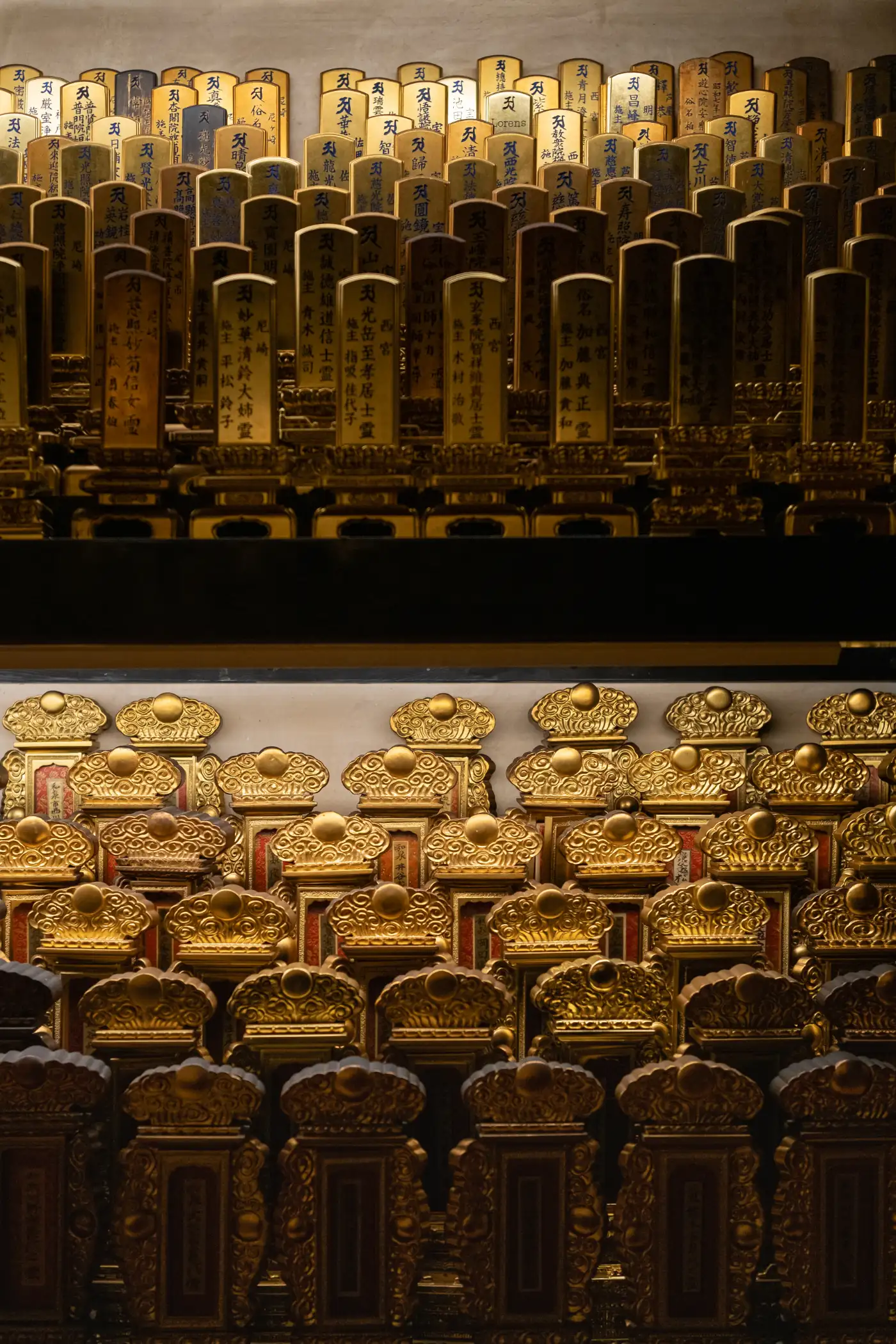
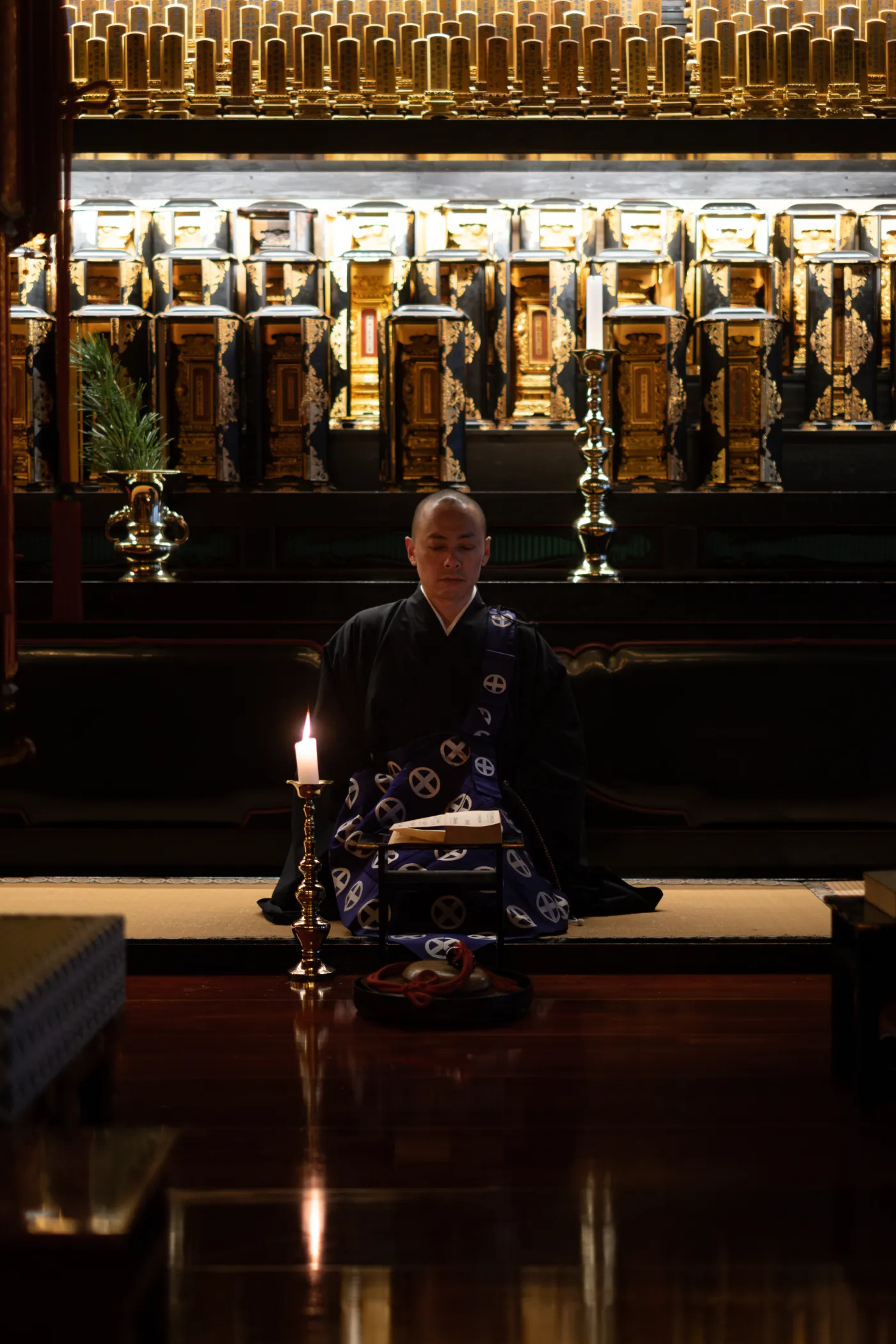
Our Mind is Like the Moon
What is a practice or inquiry you’d like to offer to the Musubi audience to either try out or reflect upon in order to help them be more present to life?
I would say maybe meditate every day for five minutes.
Any meditation is fine. I think people today are too busy with new technologies, and too much information. We can work anywhere, anytime with the internet and devices. They made our lives so convenient, on the other hand we feel empty. Just to stay away from these things and focus on yourself can be beneficial. Having five minutes can make such a difference. We should live in this present moment, so sometimes we need to, even for a moment, just face ourselves and focus on our breathing.
If you are stressed or tired, if you are annoyed or unhappy, you don’t breathe deeply. Your breath becomes short and narrow, Oxygen doesn’t flow to your brain, preventing you from thinking clearly. Meditation helps you to breathe deeply, and can help you to relax and find clarity.
So, my advice would be to take a break from these devices, and use meditation to face yourself.
Any final closing thoughts?
Kobo Daishi said our mind is like the moon. As I mentioned, during Ajikan meditation, we meditate in front of a picture of a white circle, symbolizing the moon. The moon is important in our teachings because the moon was originally round, bright, clear, and pure, like our original mind. But the moon, like our mind, changes shape every day.
For example, yesterday you had an argument with your friend, so you are sad, but then today you are enjoying time with a friend, so you are happy, but tomorrow you might be angry about something, somewhere. With these shifts, our mind too changes shape, like the moon, although the original shape is round, bright, clear, and pure.
That is beautiful. Thank you for sharing your wisdom.
Speaking of the moon, I will let you go because I’m aware it’s quite late where you are.
Oh yes, it’s 11:30pm now. I need to go to bed. [laughs]
Thank you so much. I also learned from you.
